- Augur Digest
- Posts
- Augur Digest #72
Augur Digest #72
Headlines
- An appellate court ruled against many of President Trump’s tariffs, though Treasury Secretary Bessent stated he expects the Supreme Court will ultimately uphold the president’s tariff authority.
- Growing concerns about the United Kingdom’s fiscal stability drove yields on long-term British government bonds to levels not seen in nearly thirty years.
- US Treasury Secretary Bessent indicated that a housing emergency could be declared in the fall.
Global Economics
United States
- The ISM Manufacturing PMI for August rose to 48.7 from 48.0, but missed the 49.0 consensus and remained in contraction for the sixth straight month. The report showed a stark divergence: the forward-looking New Orders Index jumped back into expansion at 51.4 for the first time in seven months, while the Production Index fell sharply into contraction at 47.8. The Prices Paid Index eased slightly to 63.7 but remained highly elevated, and the Employment Index stayed deeply contractionary at 43.8, with firms reportedly reducing headcounts.
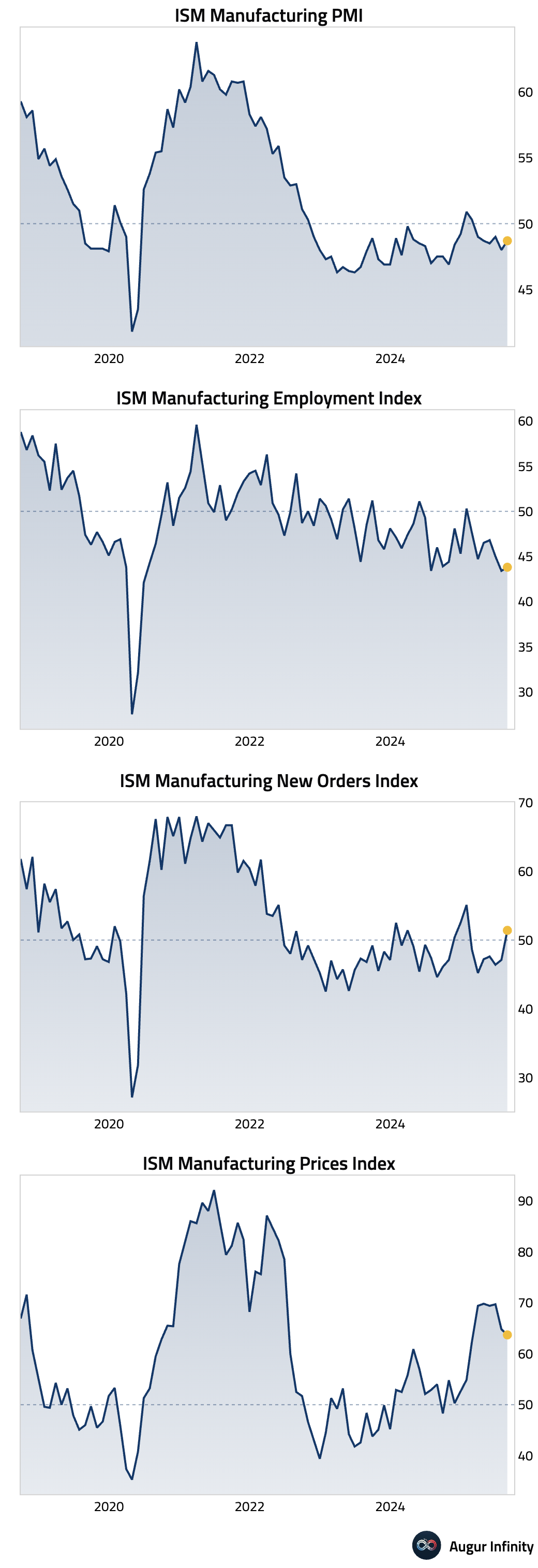
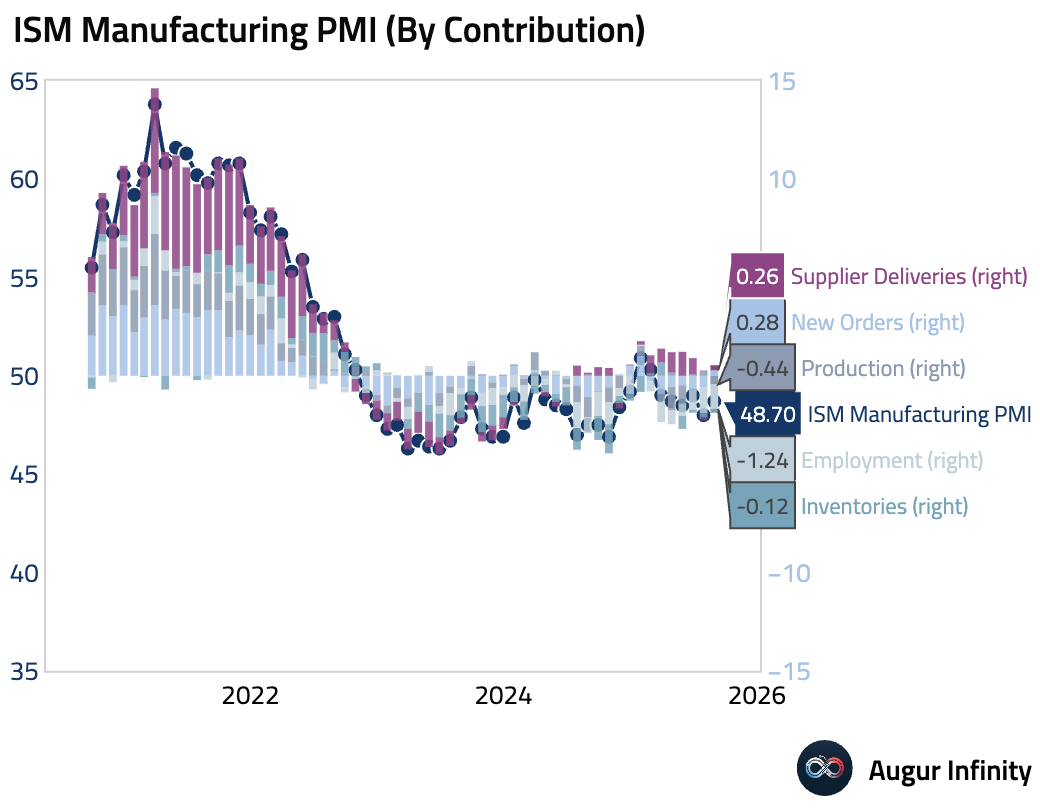
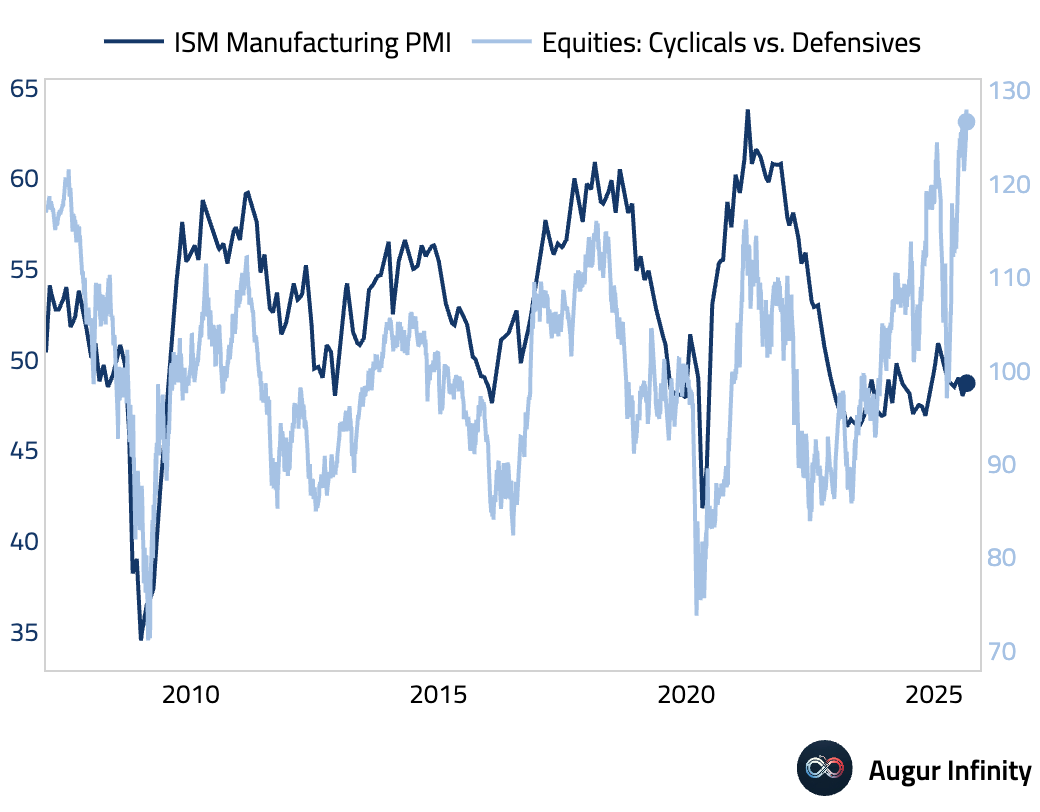
- The final S&P Global US Manufacturing PMI for August was revised down slightly from 53.3 to 53.0, its highest reading since May 2022. The expansion was driven by stronger production fueled by new orders and significant inventory building, as firms stockpiled goods amid concerns over future prices and supply constraints linked to tariffs.
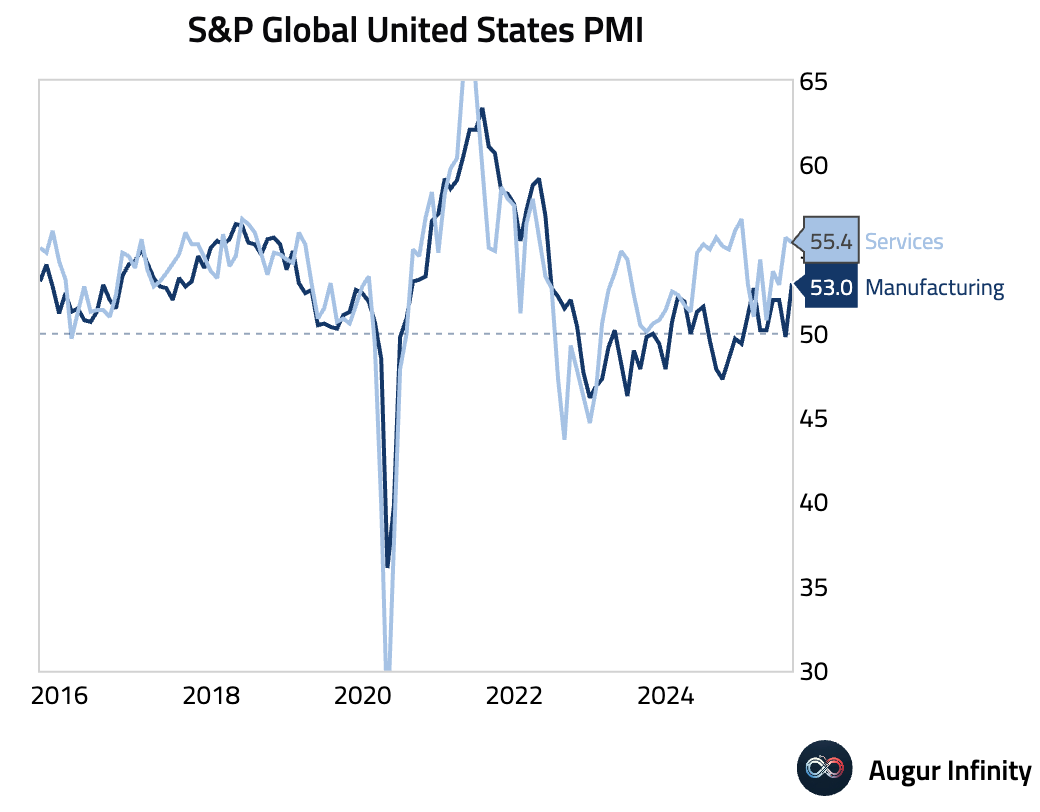
- US construction spending fell 0.1% M/M in July, matching consensus. The decline was driven by private nonresidential projects. After adjusting for a 0.4% M/M rise in construction costs, real spending fell by a more significant 0.5%.
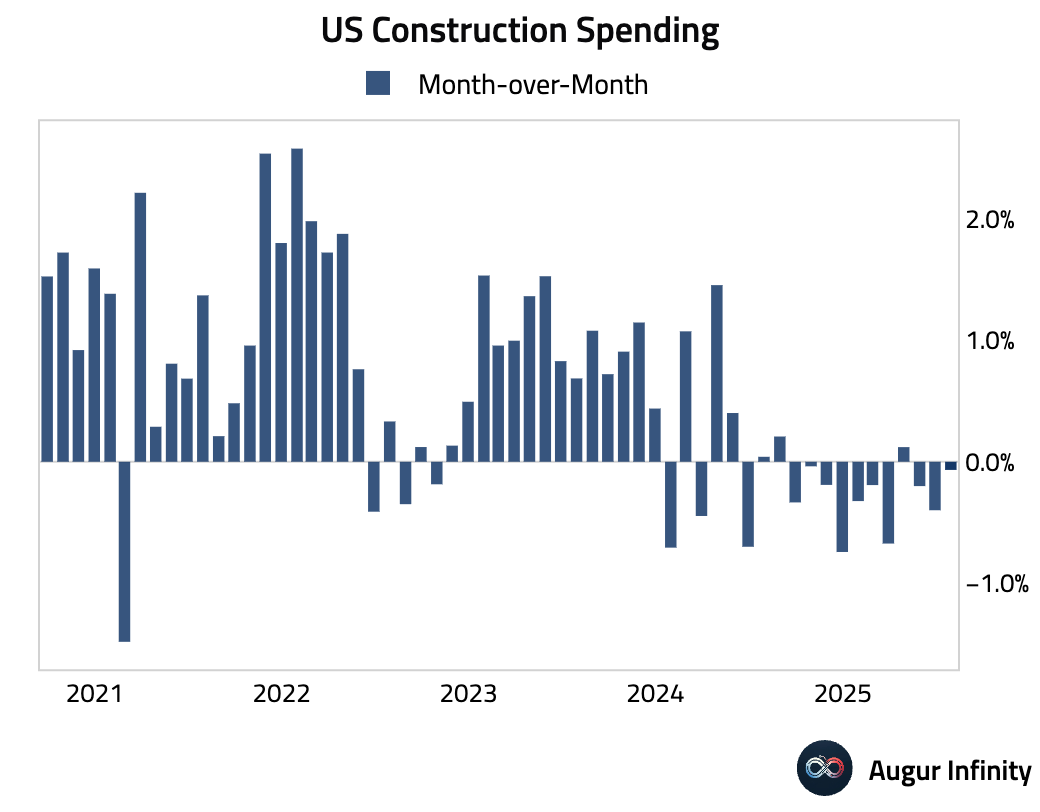
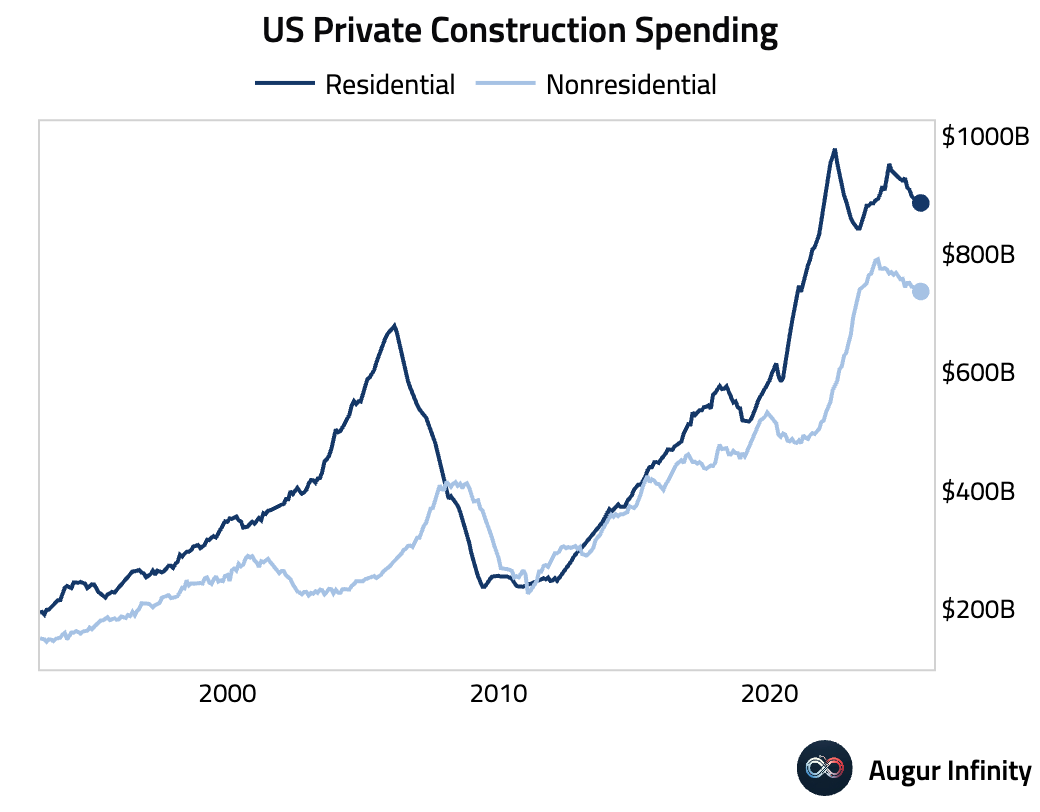
- Construction spending on data center rose further to $42.2 billion (SAAR) in July, while spending on general office continued to decline.
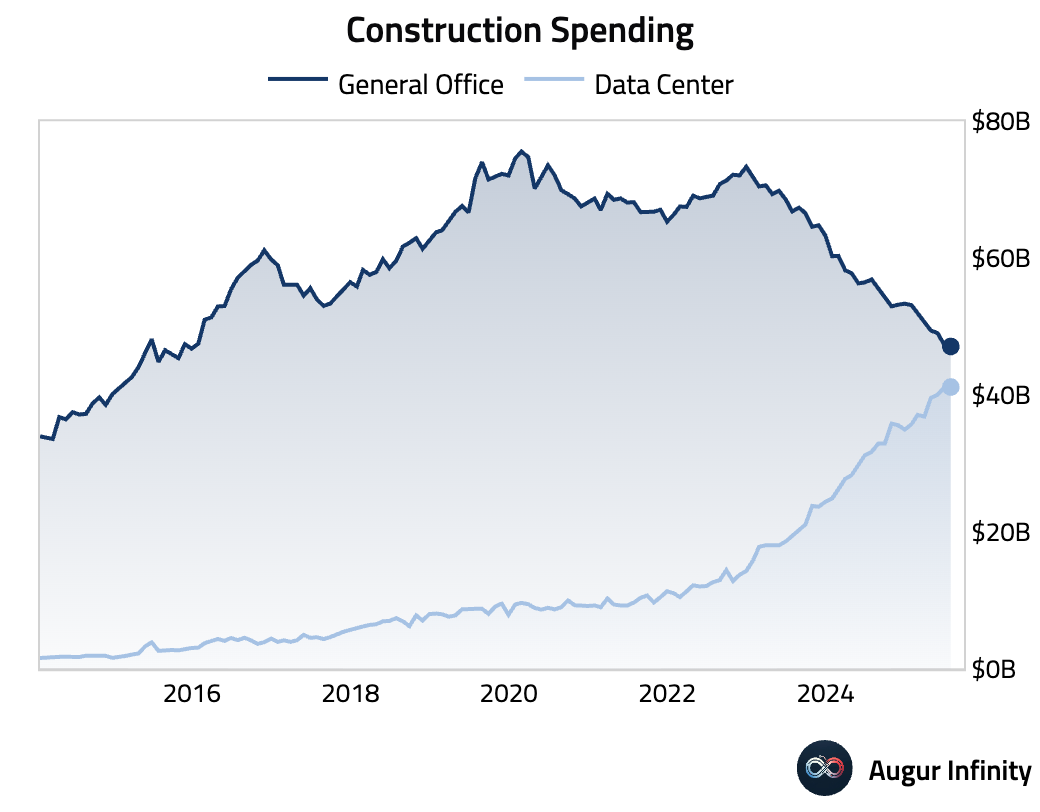
- The Atlanta Fed's GDPNow model is now tracking Q3 GDP at 3.0%, down from 3.5% on August 29.
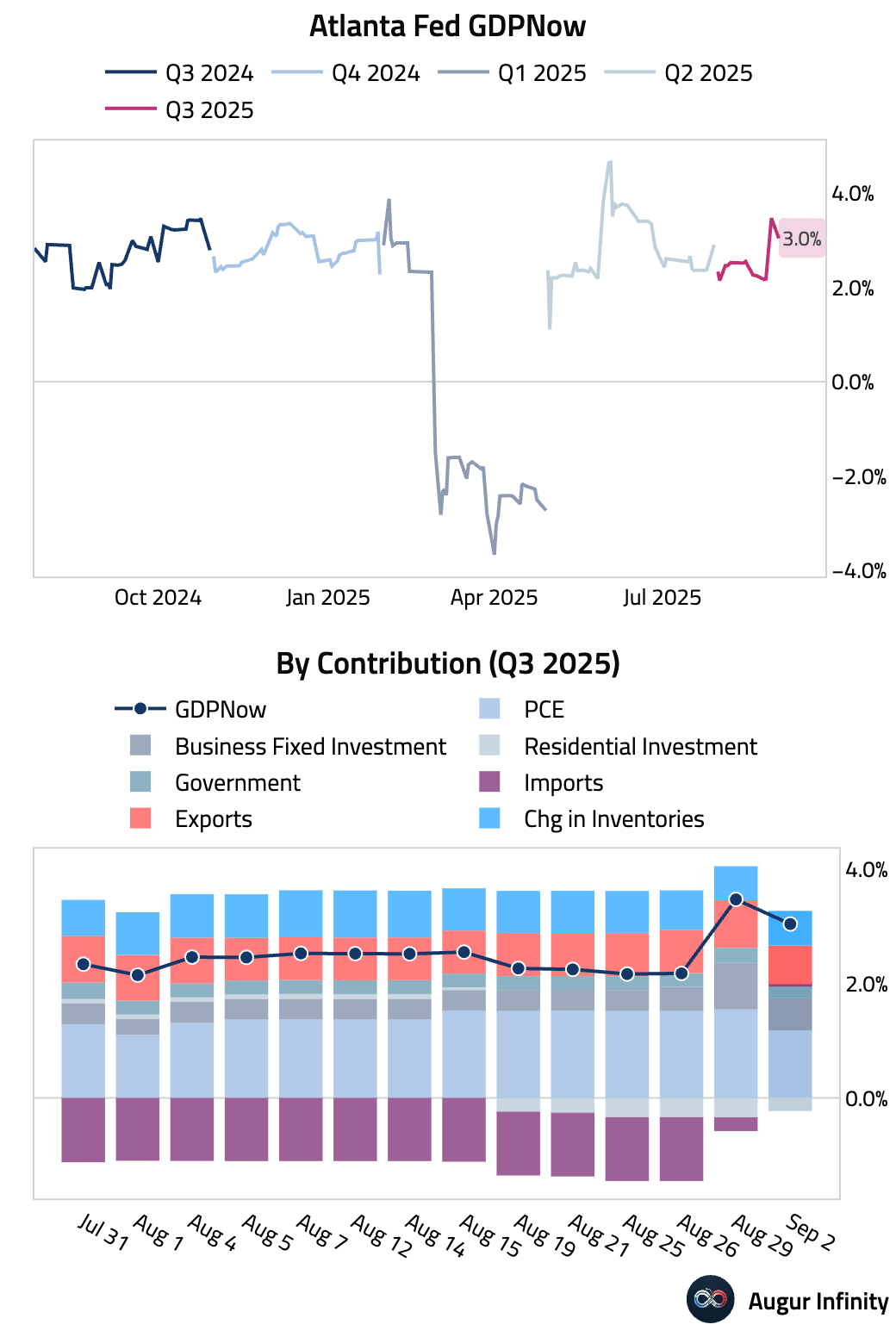
- The RCM/TIPP Economic Optimism Index fell back into pessimistic territory in September, dropping to 48.7 from 50.9.
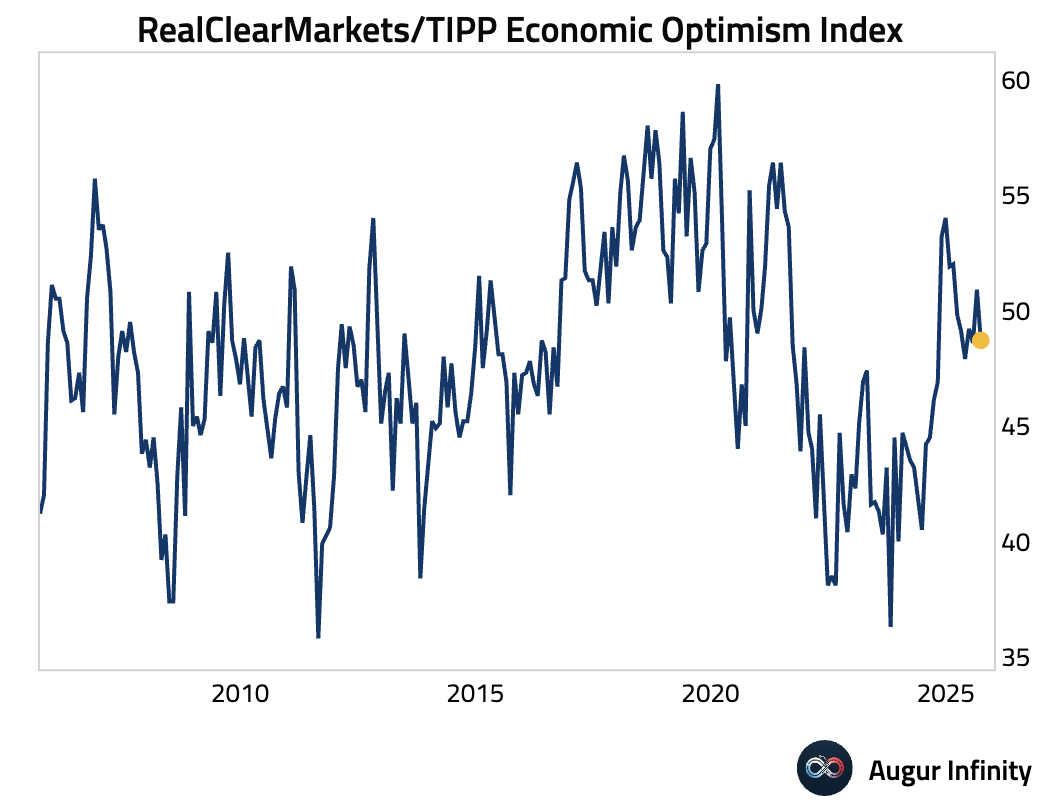
Canada
- Canada’s S&P Global Manufacturing PMI rose to a seven-month high of 48.3 in August, up from 46.1. Despite the improvement, the index remained in contractionary territory for the seventh consecutive month, as ongoing trade tariffs continue to suppress demand from US clients and raise input costs.
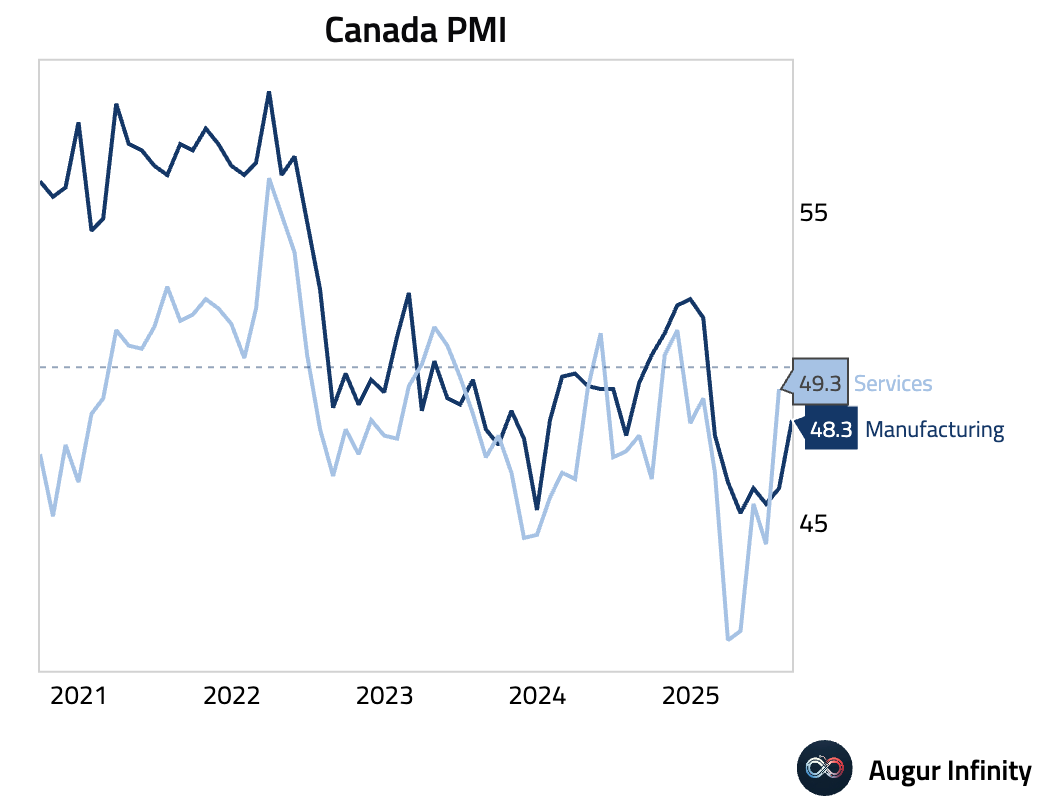
Europe
- The flash estimate for Eurozone headline inflation unexpectedly ticked up to 2.1% Y/Y in August, slightly above the 2.0% consensus. Core inflation held steady at 2.3%, also above the 2.2% forecast. The upside surprise in the core reading was driven by stronger-than-expected core goods inflation, which offset an anticipated decline in services inflation.
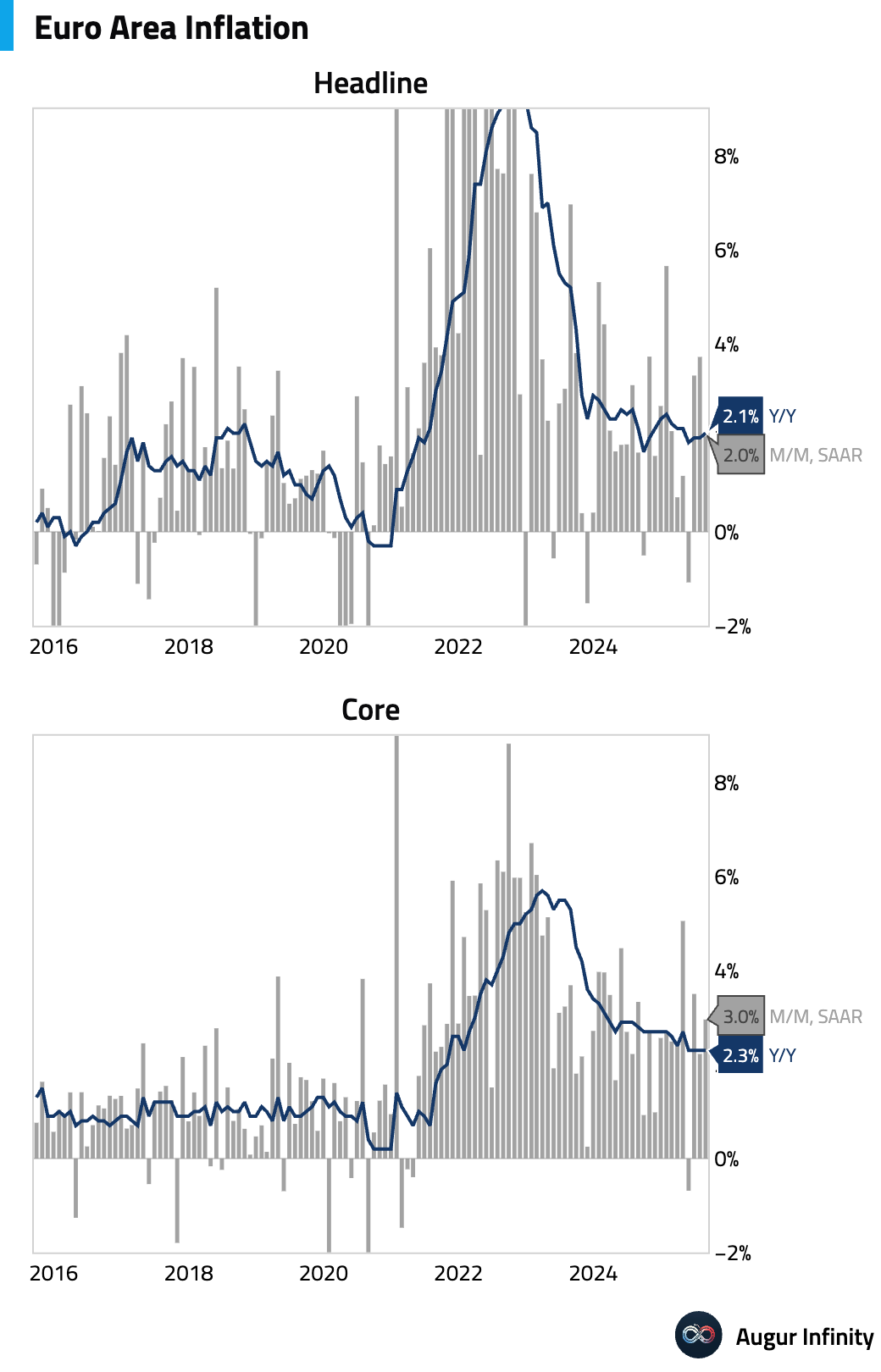
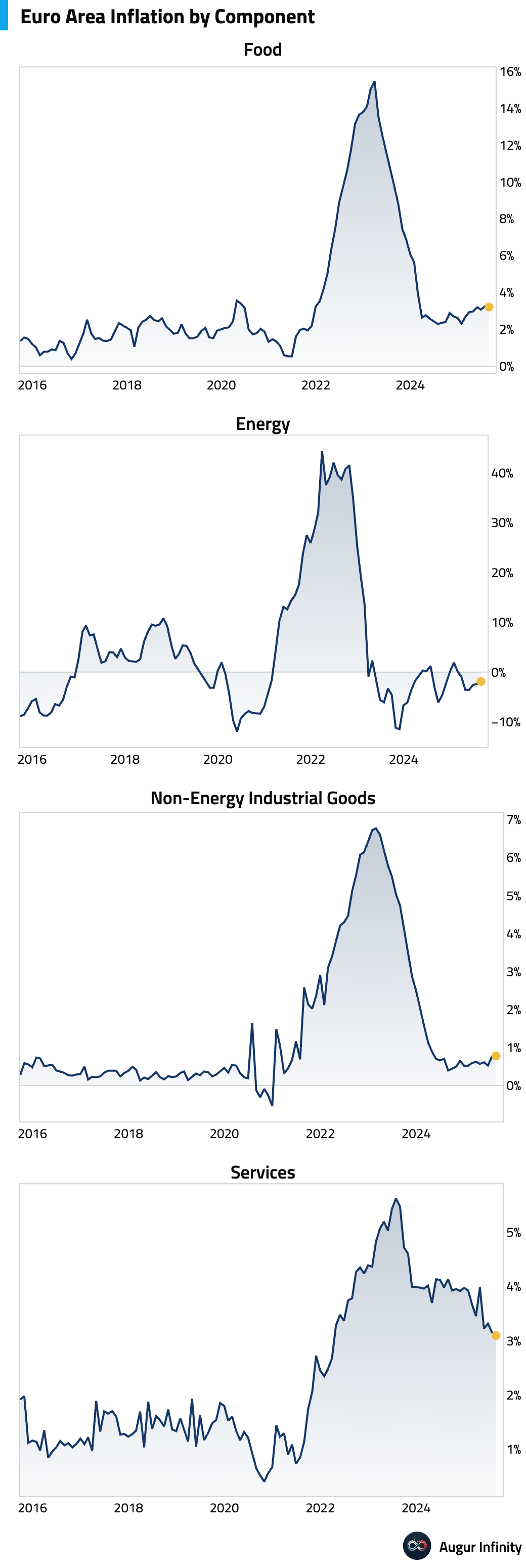
- Spanish unemployment rose by 21.9k in August, a significantly larger increase than the 14.2k consensus, reversing July’s small decline. On a seasonally-adjusted basis, however, unemployment declined on the month.
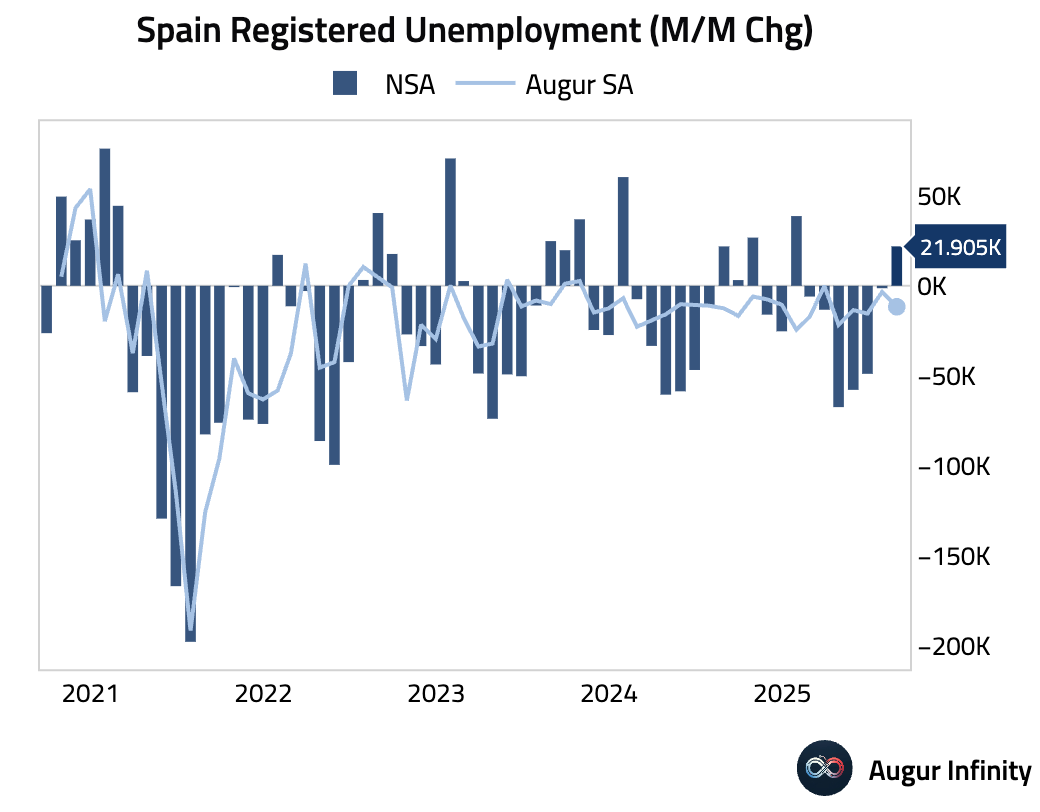
- Preliminary data showed Dutch inflation slowed to 2.8% Y/Y in August from 2.9% in July.
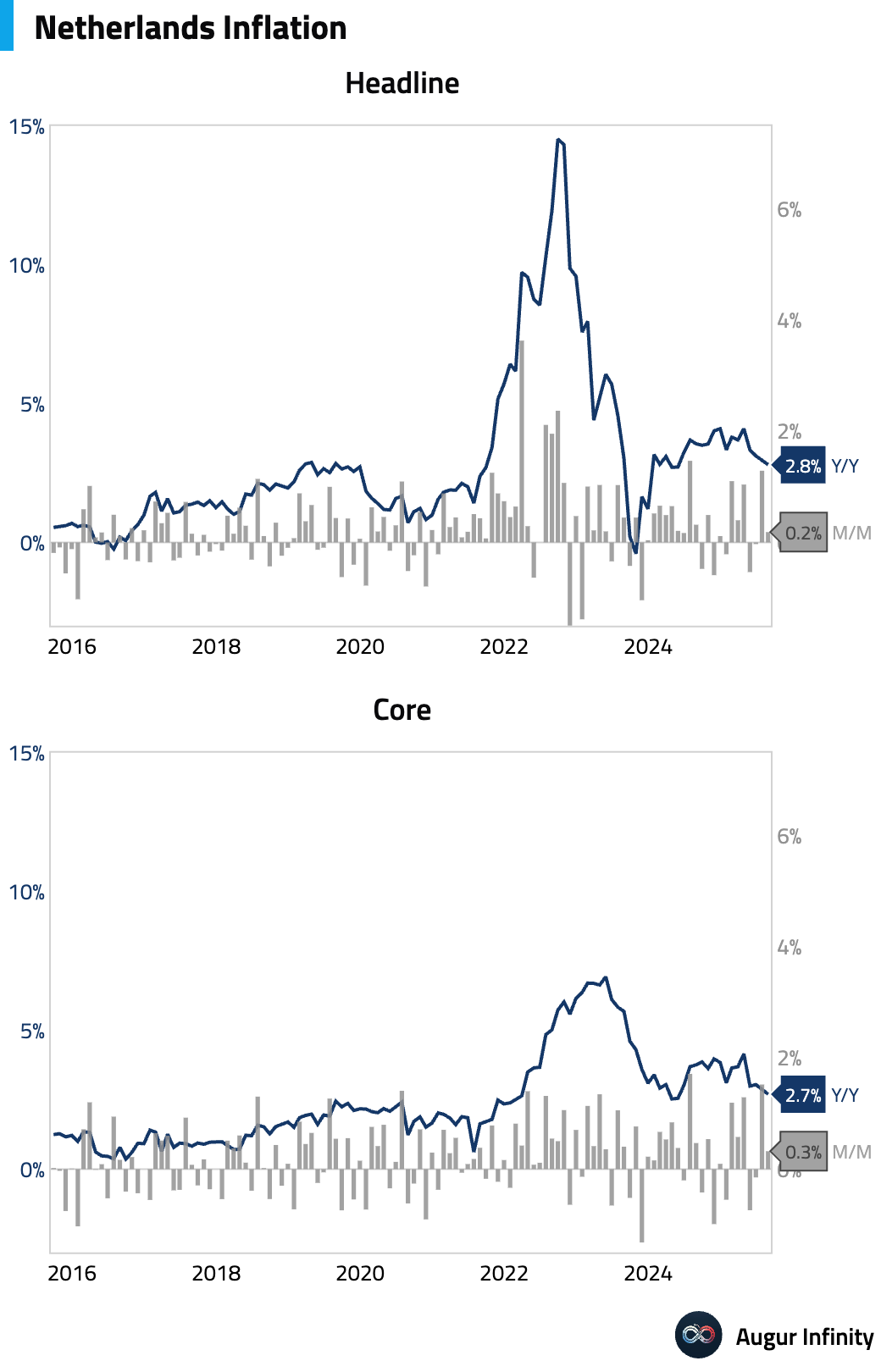
- France’s year-to-date budget deficit widened to €142 billion through July, a larger gap than the €107.2 billion forecast for the period.
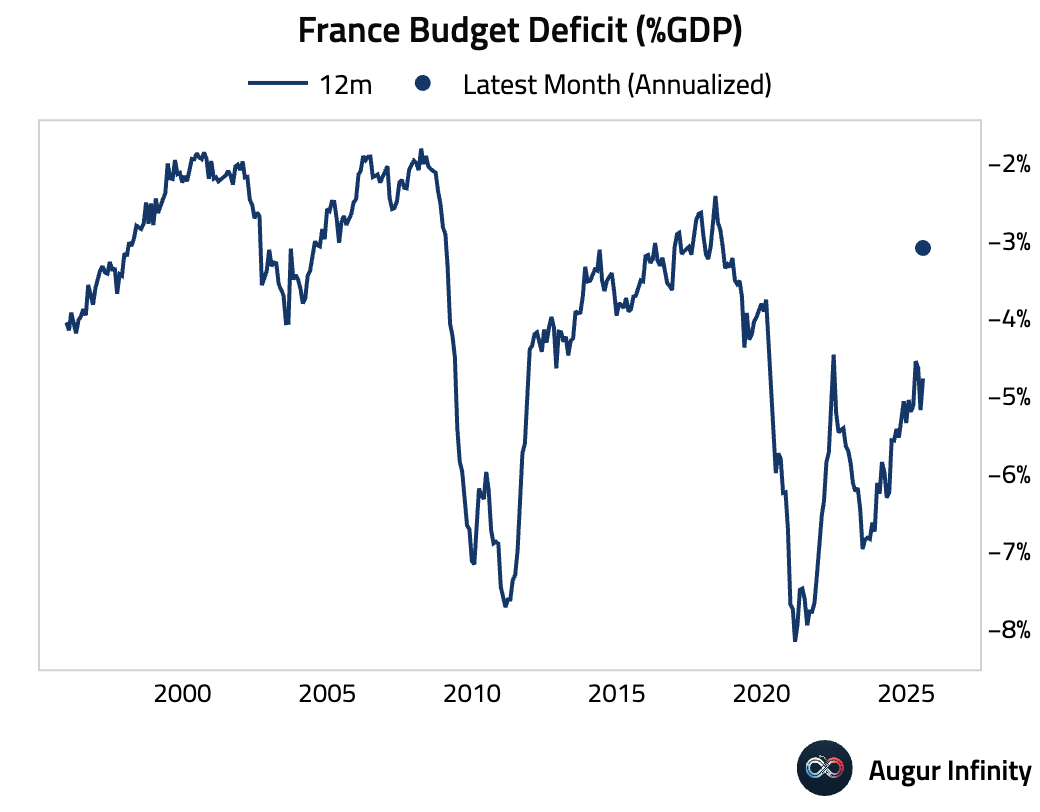
- Italian producer price inflation decelerated in July, with the M/M rate slowing to 0.5% from 1.4% and the Y/Y rate easing to 1.6% from 2.4%.
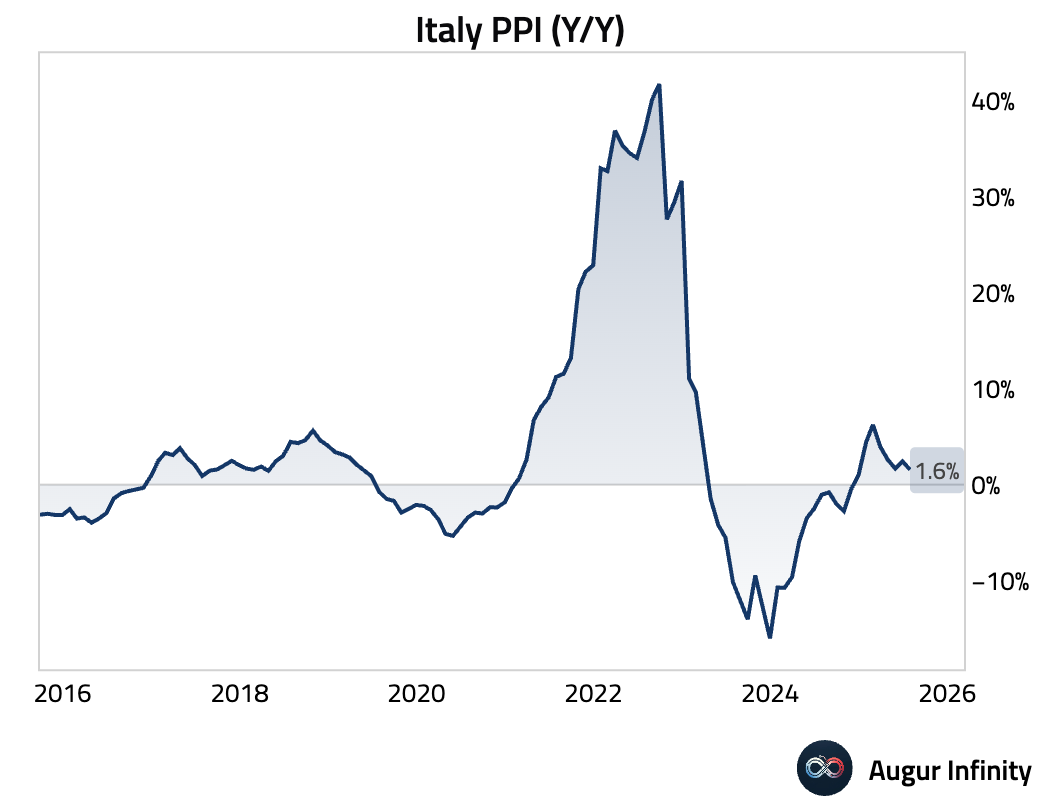
- Portugal’s industrial production fell 1.5% M/M in July, though year-over-year growth remained positive but slowed to 2.3% from 3.0%.
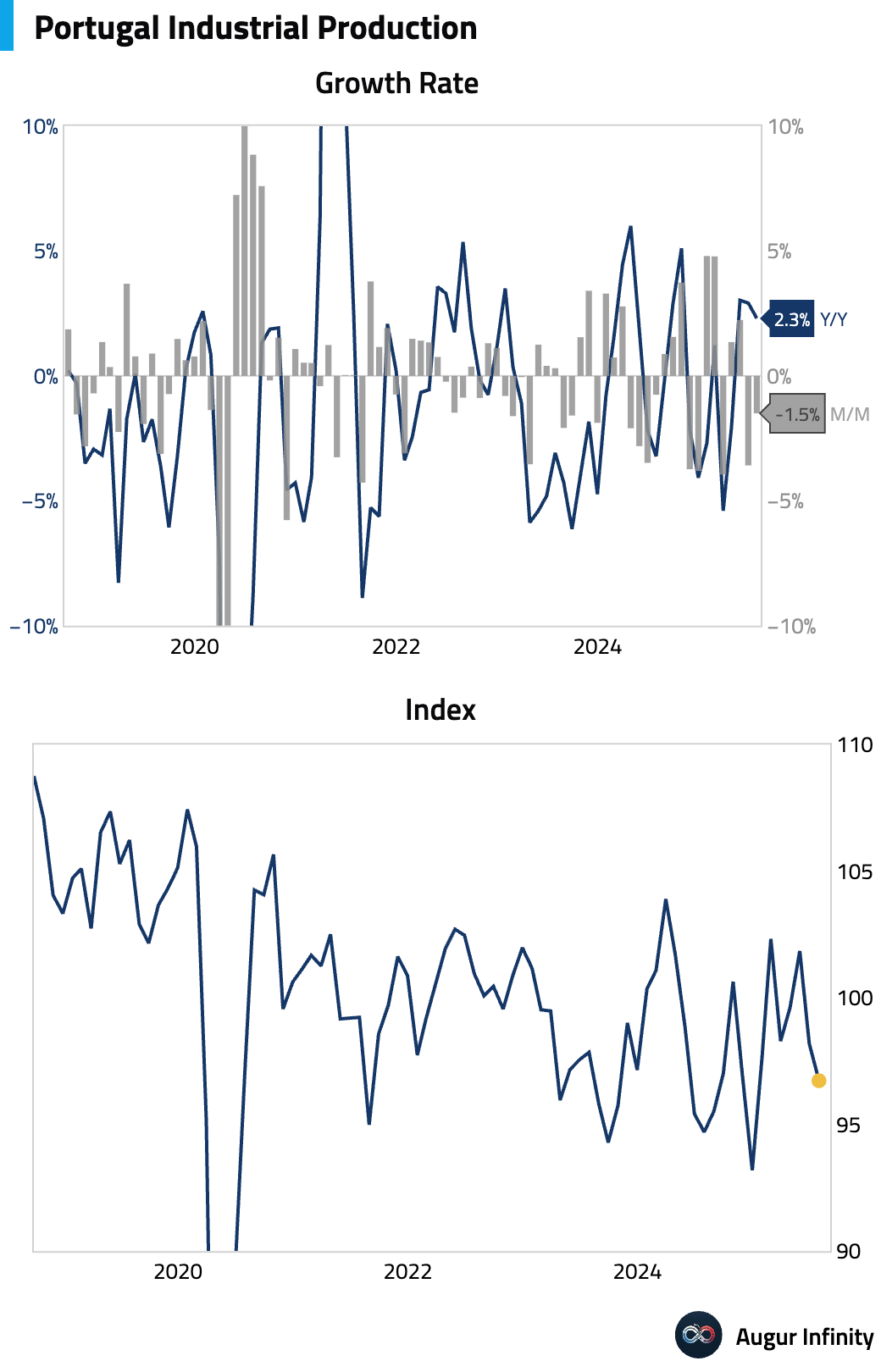
- Portugal's year-to-date budget deficit narrowed to €3.5 billion through July from €4.1 billion in the prior period.
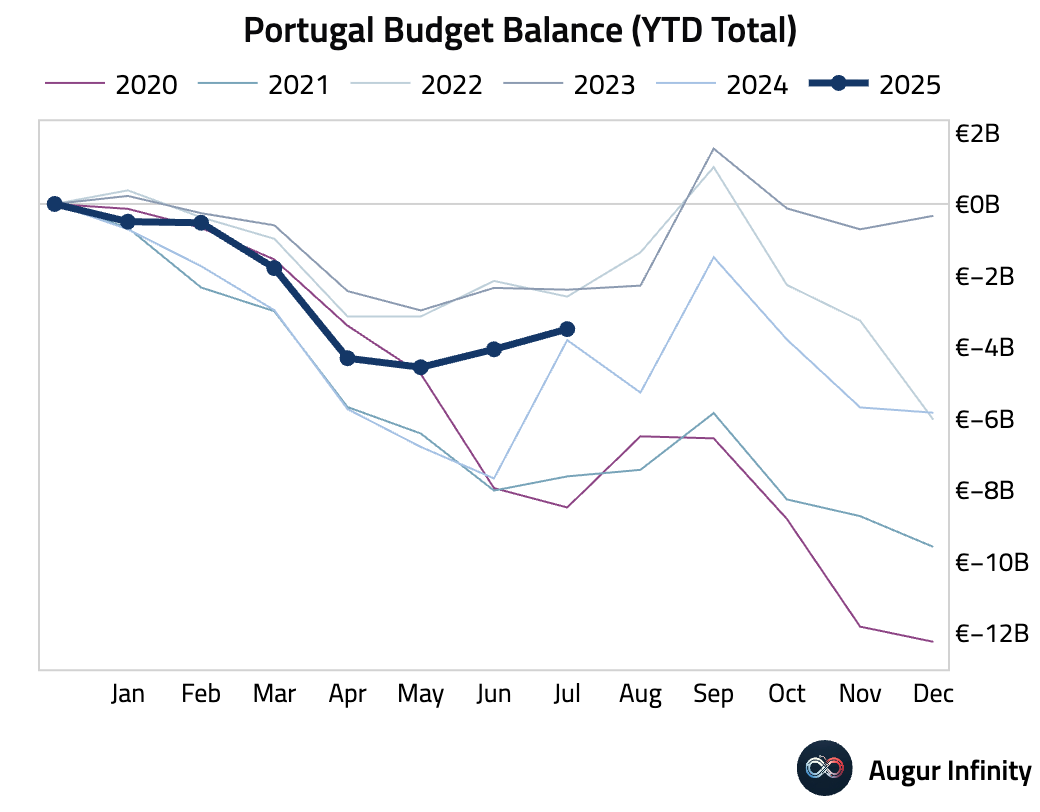
Asia-Pacific
- South Korea’s annual inflation rate fell to 1.7% in August from 2.1%, missing the 2.0% consensus, while the monthly rate unexpectedly declined 0.1%. The drop was driven entirely by a temporary, one-month discount on mobile phone charges from a major telecom provider, an effect that is expected to reverse in September.
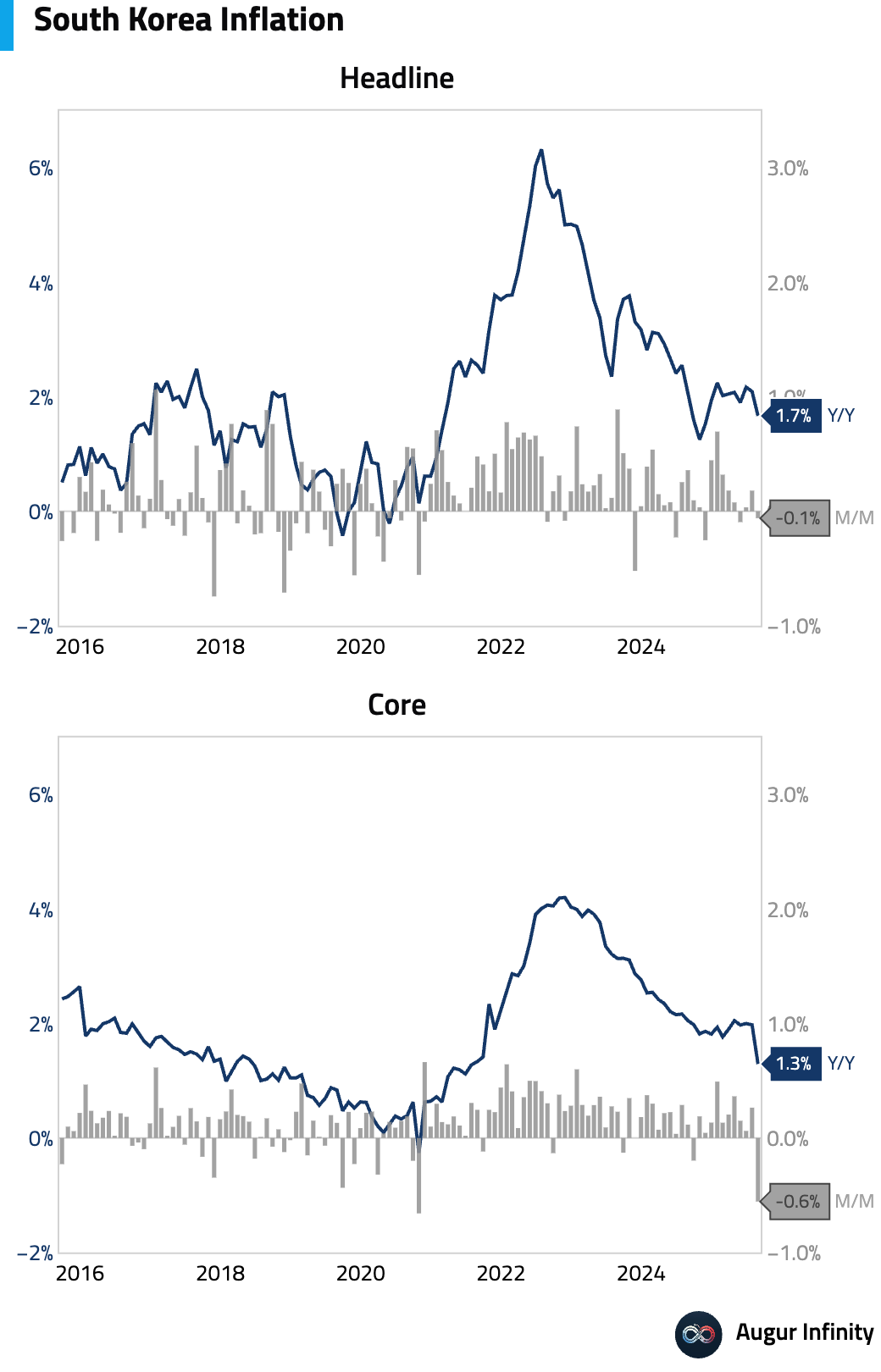
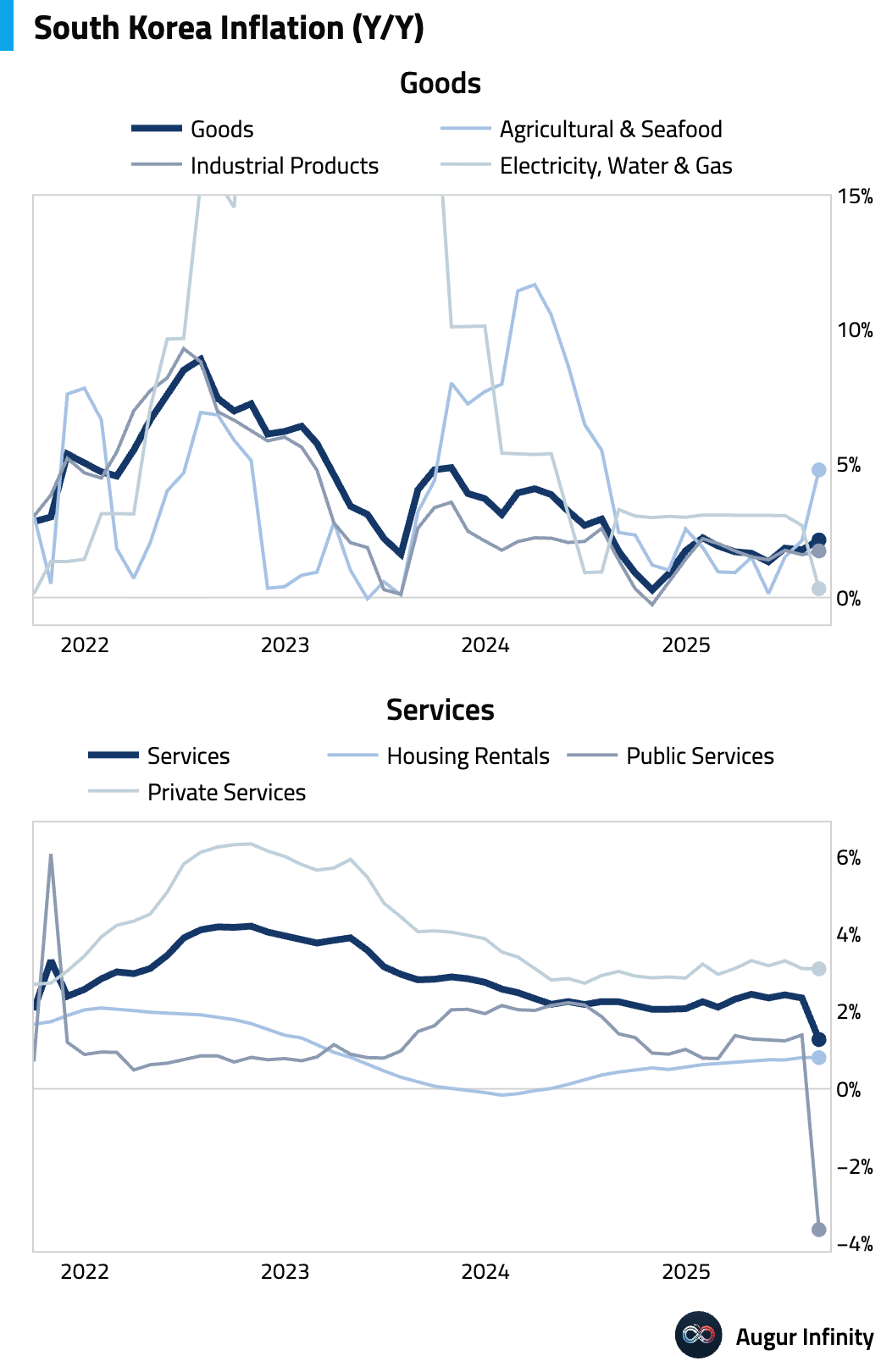
- Australia’s Q2 current account deficit narrowed to A$13.7 billion, smaller than the A$15.1 billion expected. The improvement was driven by a smaller net income deficit, which offset a decline in the goods and services surplus. Net exports are now forecast to add 0.1 percentage points to Q2 GDP.
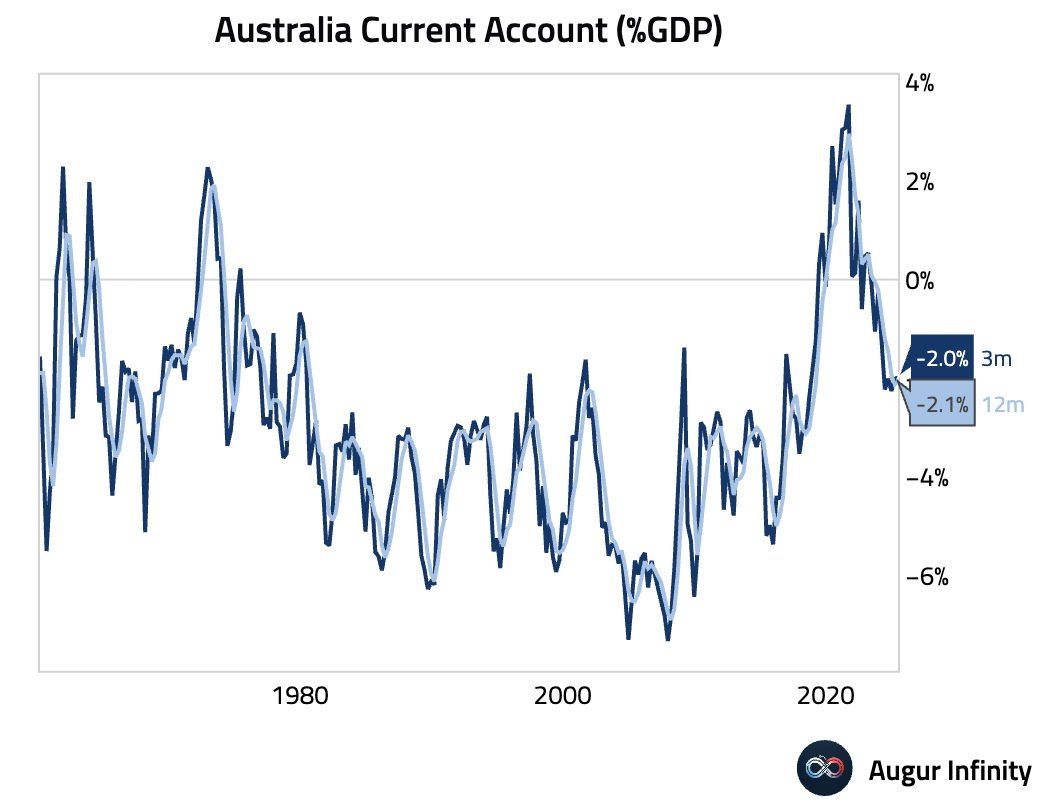
- New Zealand’s terms of trade improved as Q2 export prices edged up 0.2% Q/Q while import prices fell 3.7%.
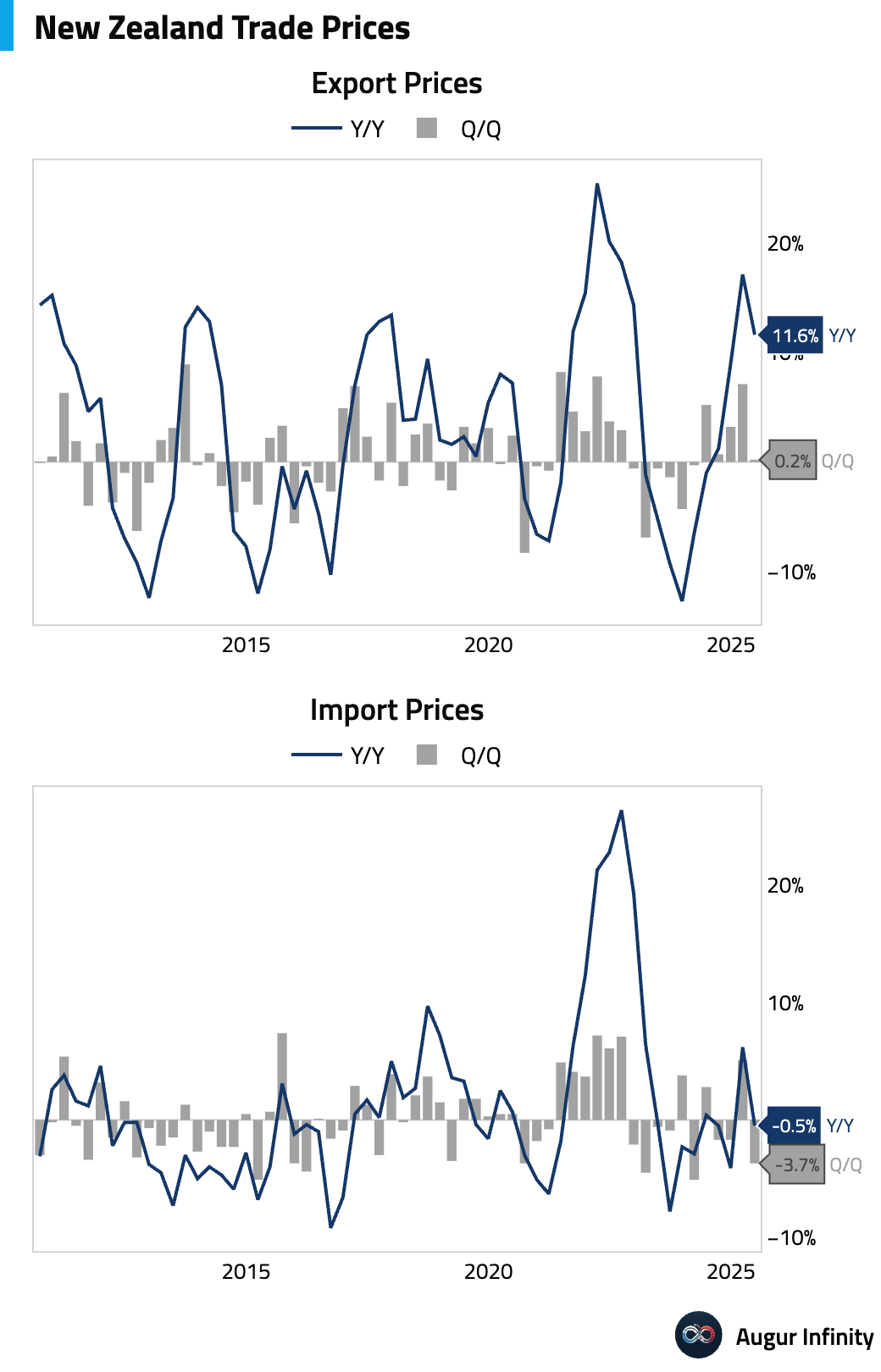
- Singapore’s manufacturing sector reached the neutral threshold in August, with the SIPMM PMI rising to 50.0 from 49.9.
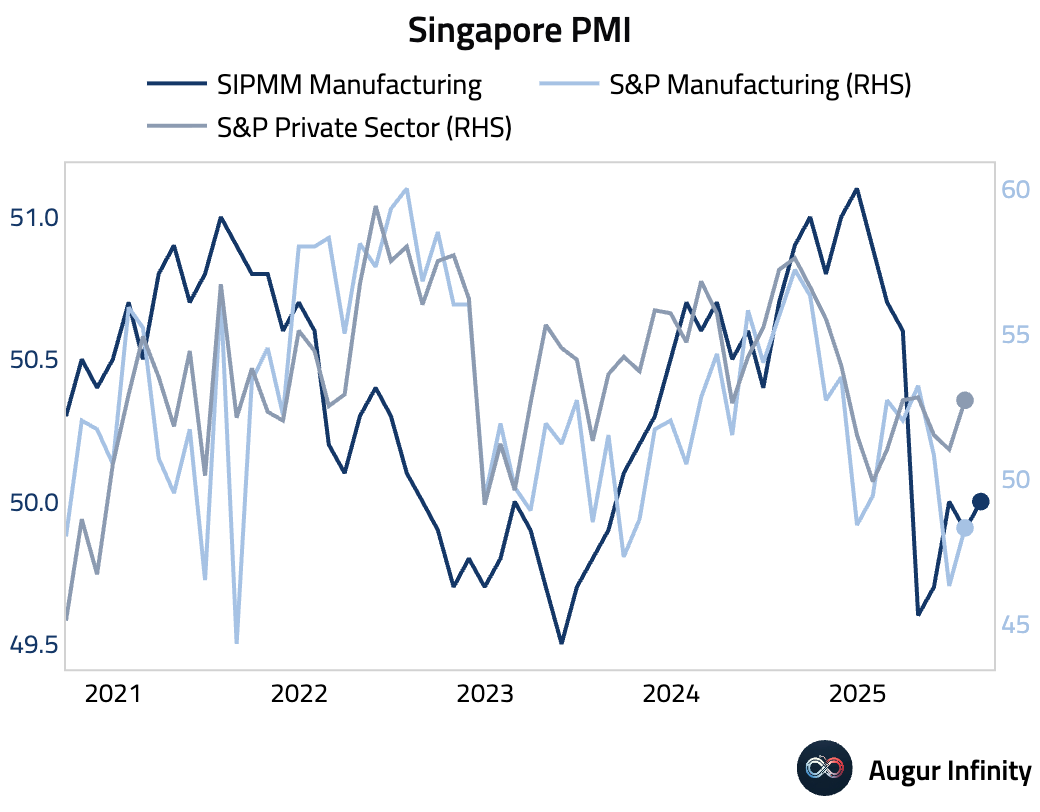
Emerging Markets ex China
- Brazil’s economy grew 0.4% Q/Q (or 1.5% annualized) in the second quarter, beating expectations for a 0.3% expansion. However, this represents a sharp slowdown from Q1. The headline figure masked significant domestic weakness, with gross fixed investment plunging 2.2% Q/Q; the quarter was supported by a large positive contribution from net exports as imports fell sharply.
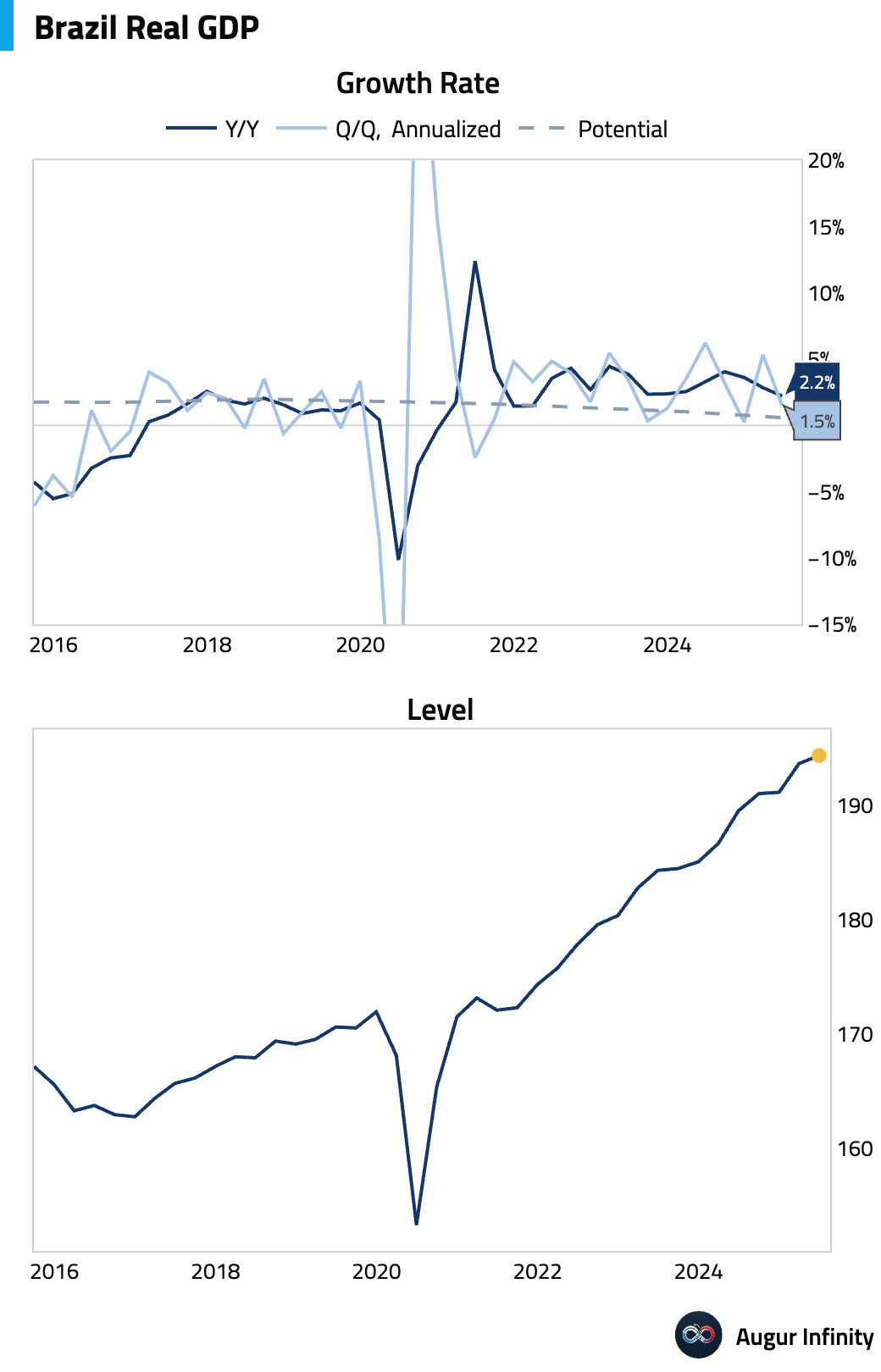
- Malaysia's S&P Global Manufacturing PMI rose to 49.9 in August, its highest level since June 2024 and nearing stabilization. Production grew for the first time in 15 months on the back of the strongest new order growth in three years, though firms cut employment amid concerns about the global economy.
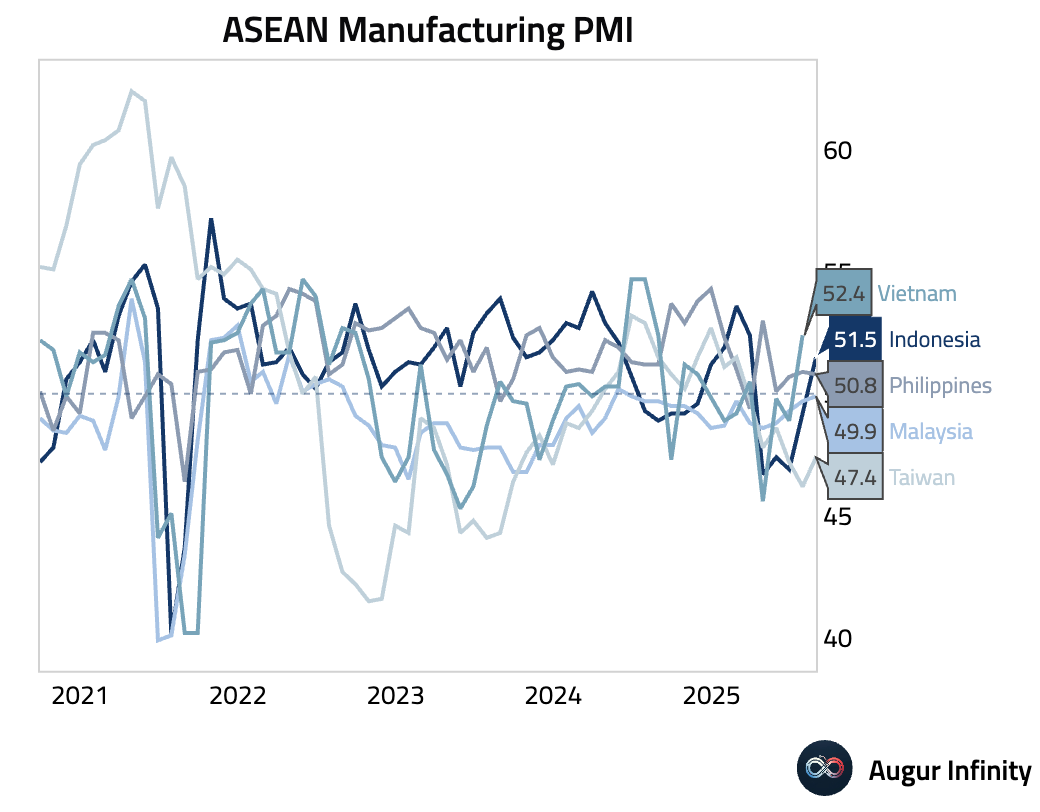
- Thai business confidence improved in August, with the index rising to 47.5 from 45.8, though it remained below the neutral 50-mark.
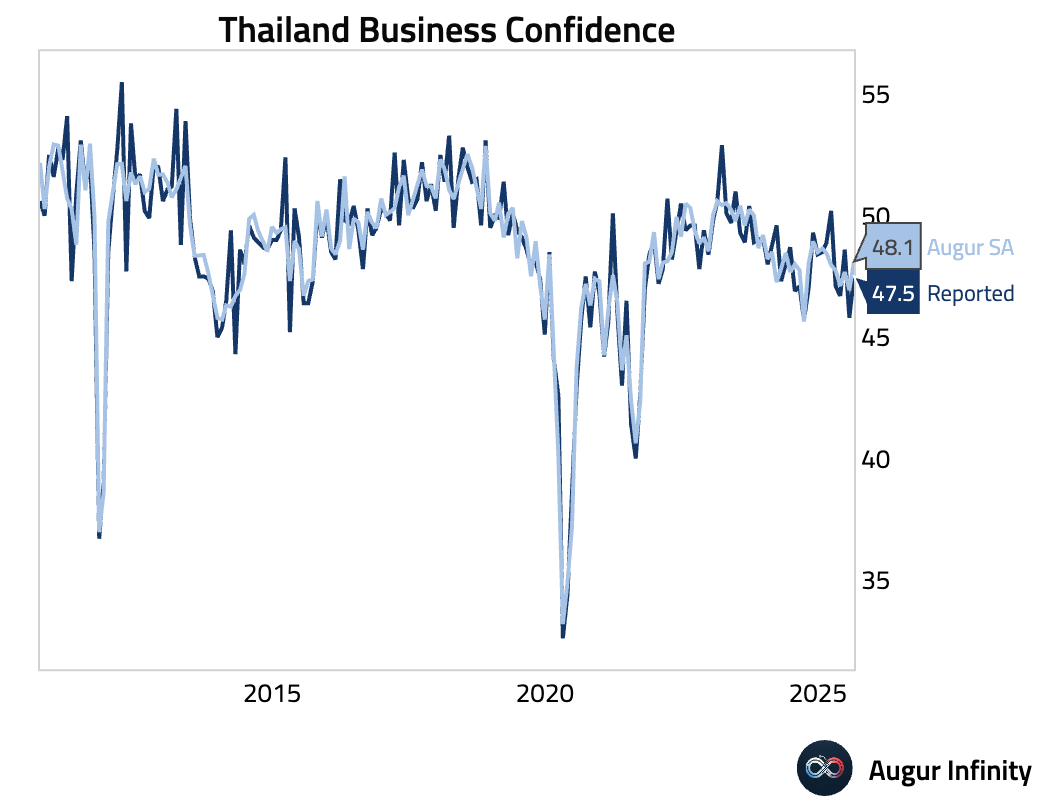
- The final estimate for Hungary’s Q2 GDP confirmed growth of 0.4% Q/Q (or 1.4% annualized) and 0.1% Y/Y.
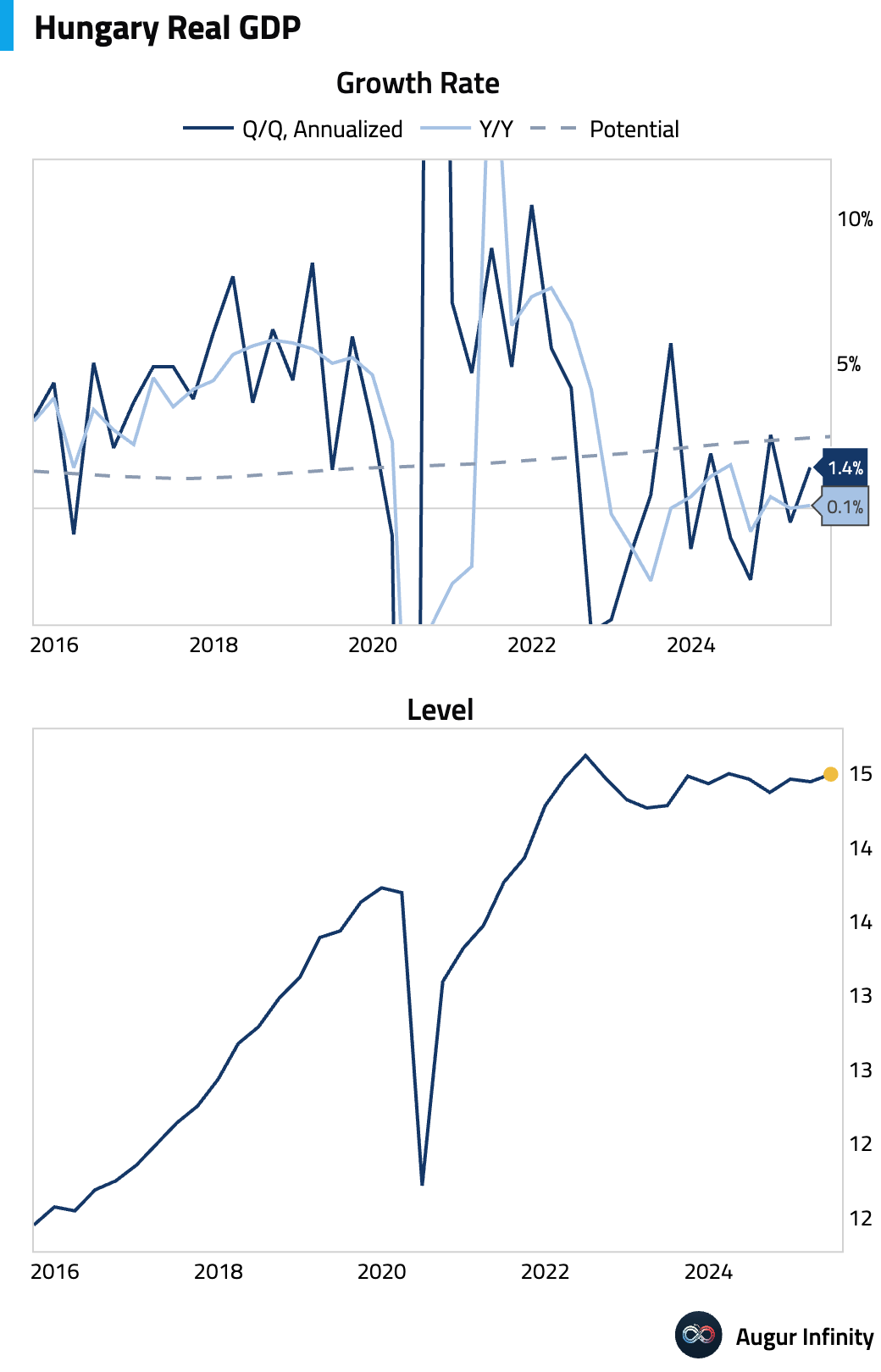
- São Paulo’s IPC-Fipe inflation index showed a sharp deceleration in August, rising just 0.04% M/M compared to 0.28% in July.
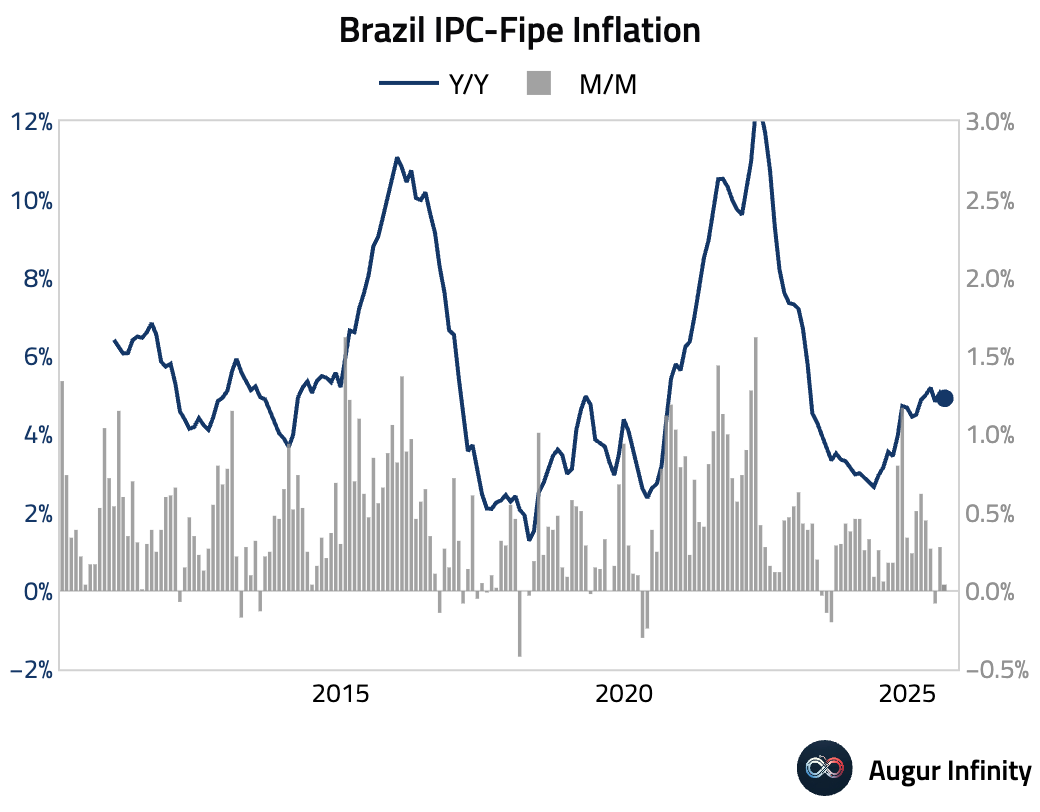
- Argentine tax revenue was ARS 15.36 trillion in August, down from ARS 17.00 trillion in July.
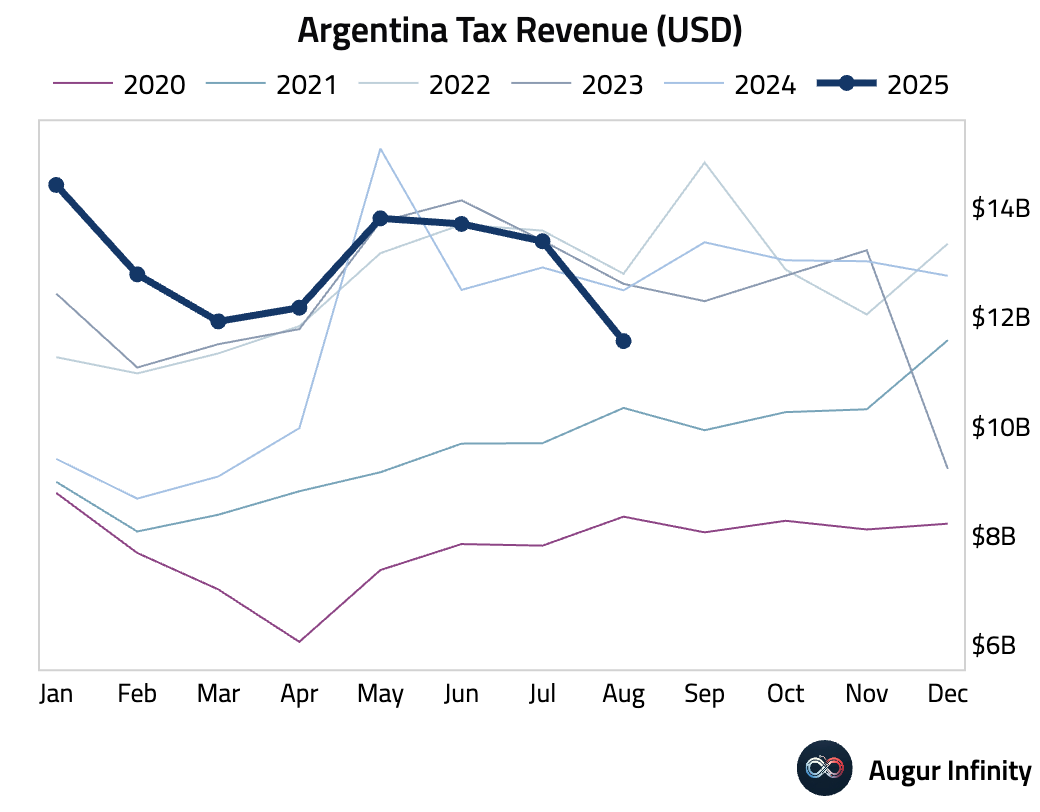
Global Markets
Equities
- Global equities started September on a weak note, driven by a sell-off in US markets. Concerns over a federal appeals court ruling that deemed most of the prior administration's tariffs unconstitutional created uncertainty about potential fiscal impacts. In the US, the S&P 500 fell 0.7% and the tech-heavy Nasdaq declined 0.8%. European markets also saw losses, with Germany down 2.1% and the United Kingdom falling 1.5% for its sixth consecutive day of losses. In contrast, Chinese equities gained 0.7%, posting their third straight day of gains, and Mexico rose 1.6%.
- Based on forward P/E, US equities are trading at a 53% premium relative to the rest of the world.
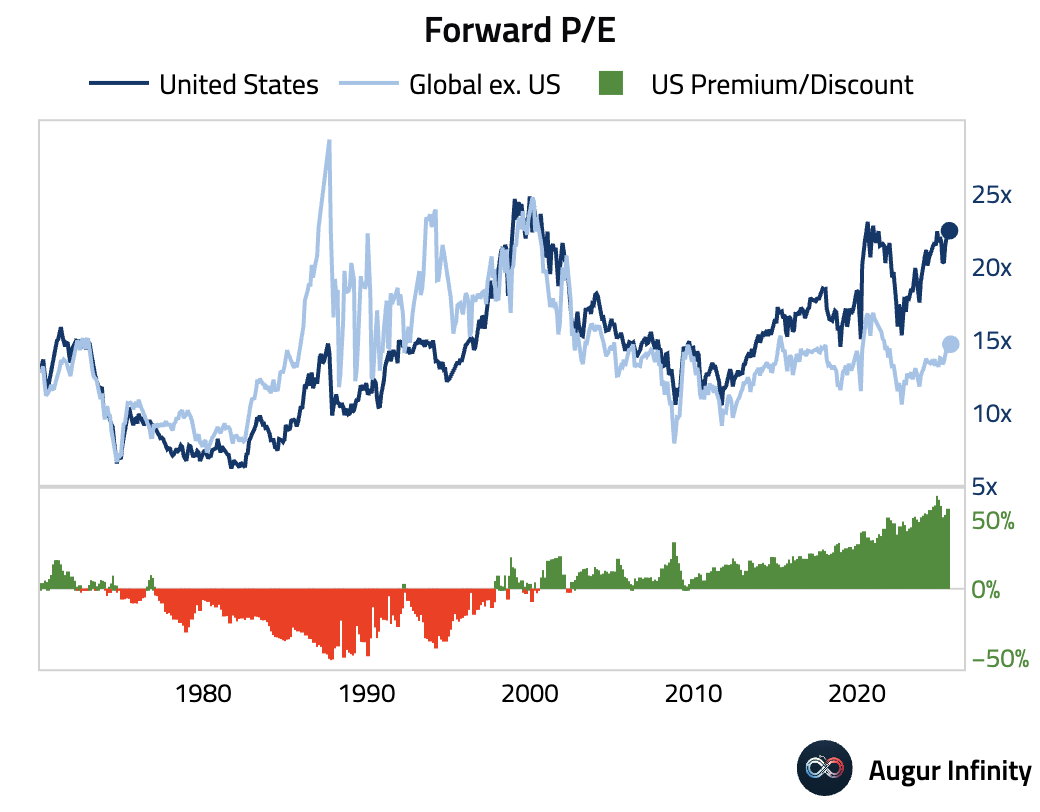
- Singapore’s FTSE Straits Times Index (STI) rose for the 5th straight day, hitting a new all-time high.
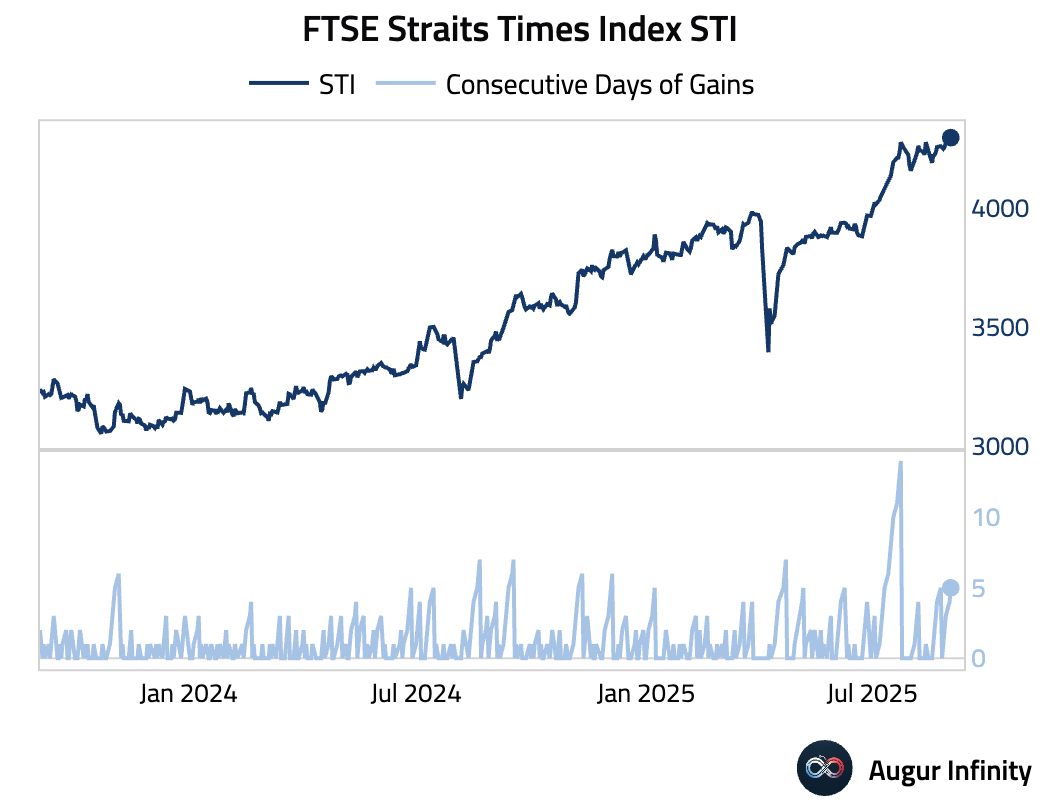
Fixed Income
- US Treasury yields rose across the curve amid significant selling pressure, reportedly linked to fiscal concerns following the court ruling on tariffs. The curve steepened as longer-dated yields saw larger increases; the 10-year yield rose by 4.4 bps and the 30-year yield was up 5.2 bps, while the 2-year yield increased by a smaller 2.4 bps.
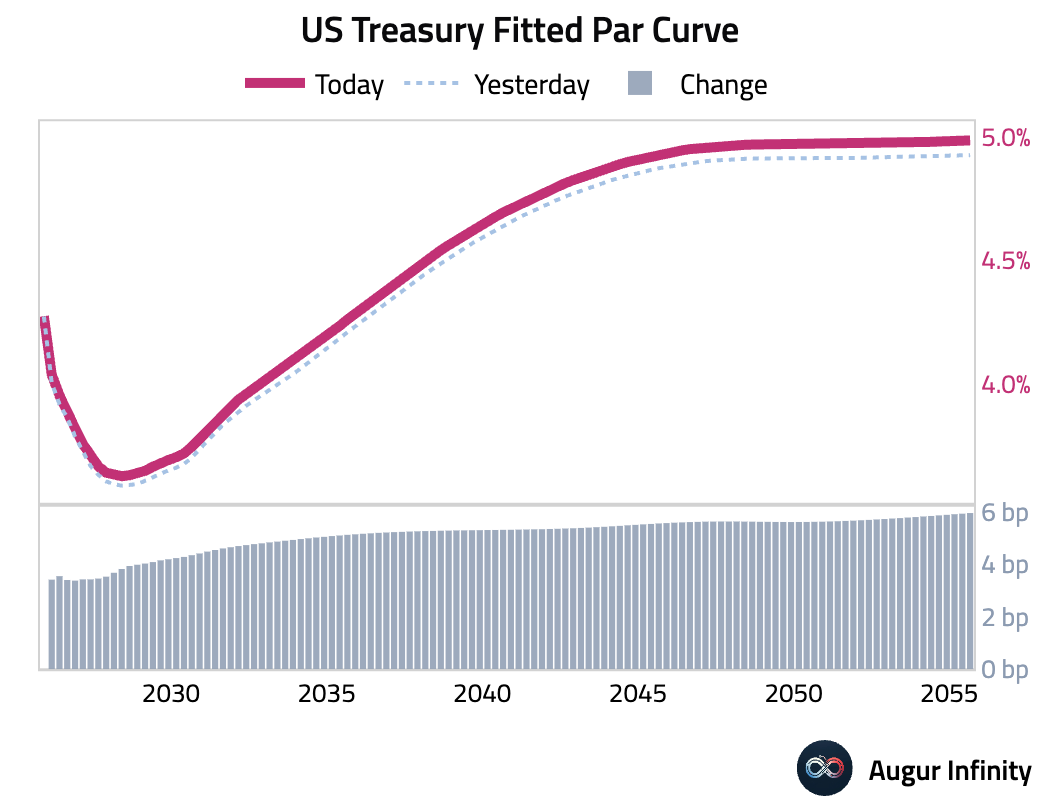
- US Treasury yield curve continues to steepen. The 10y/30y curve is now at the steepest level since June 2021.
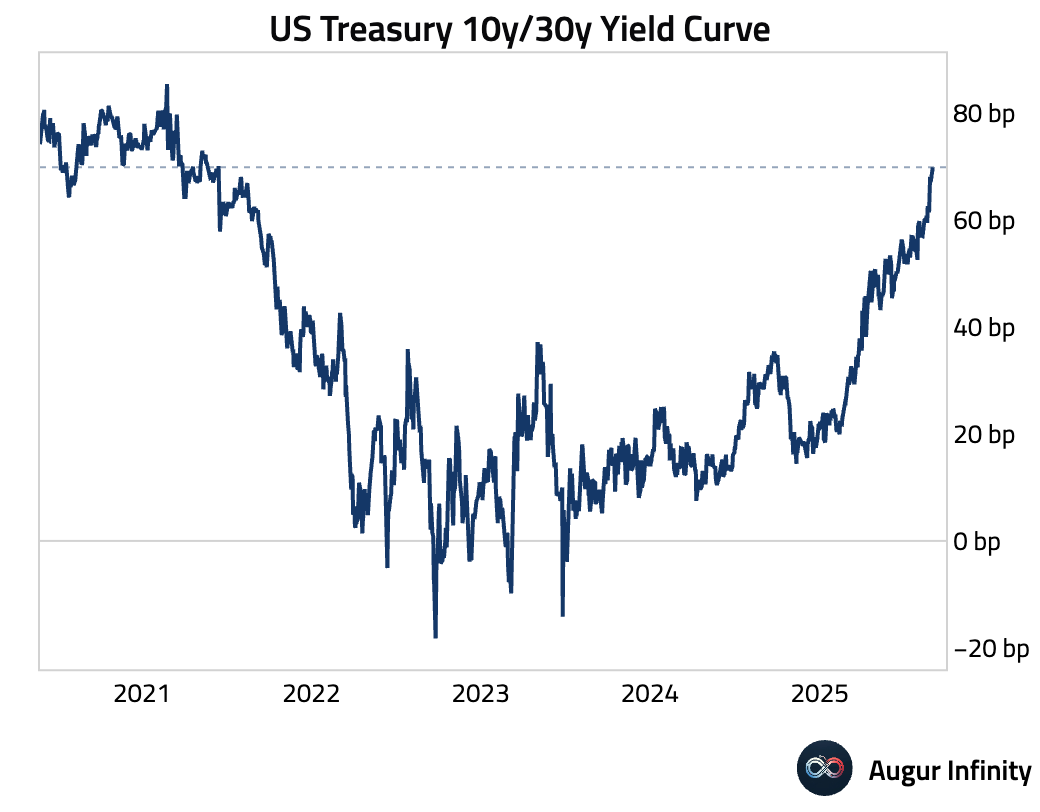
- US Treasury 10-year forward 10-year yield is now a little over 6%, the highest level since February 2011.
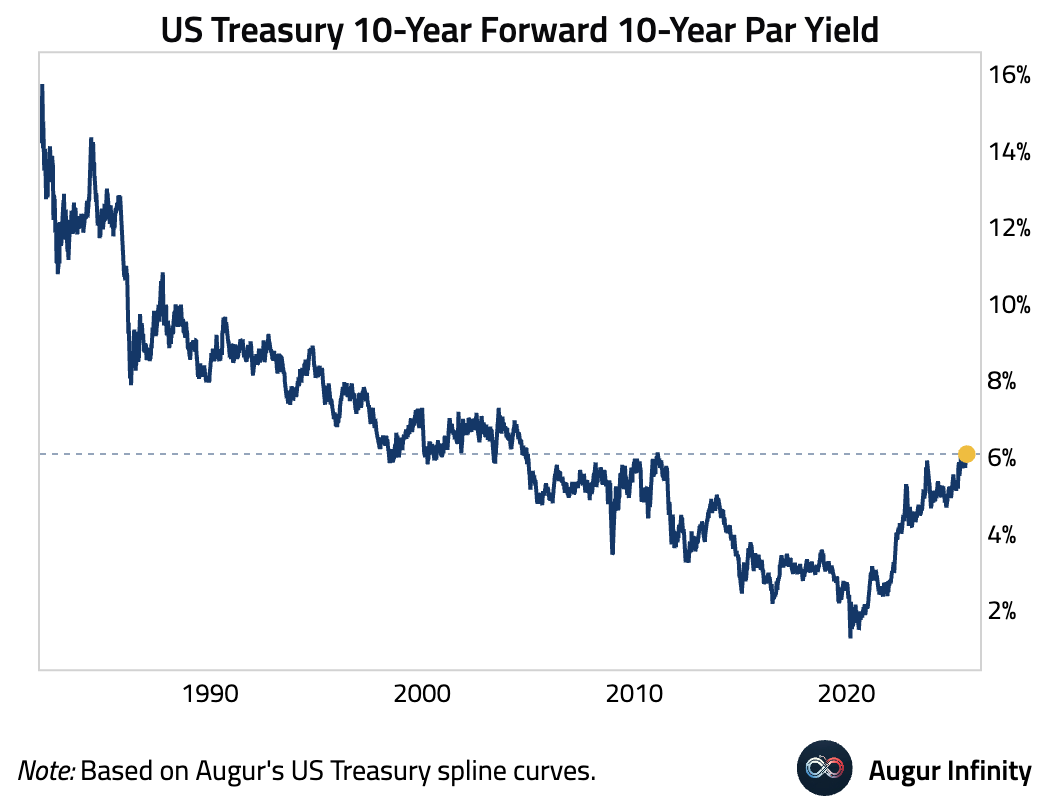
- UK 30-year government bond yield is trading around the highest level since 1998.
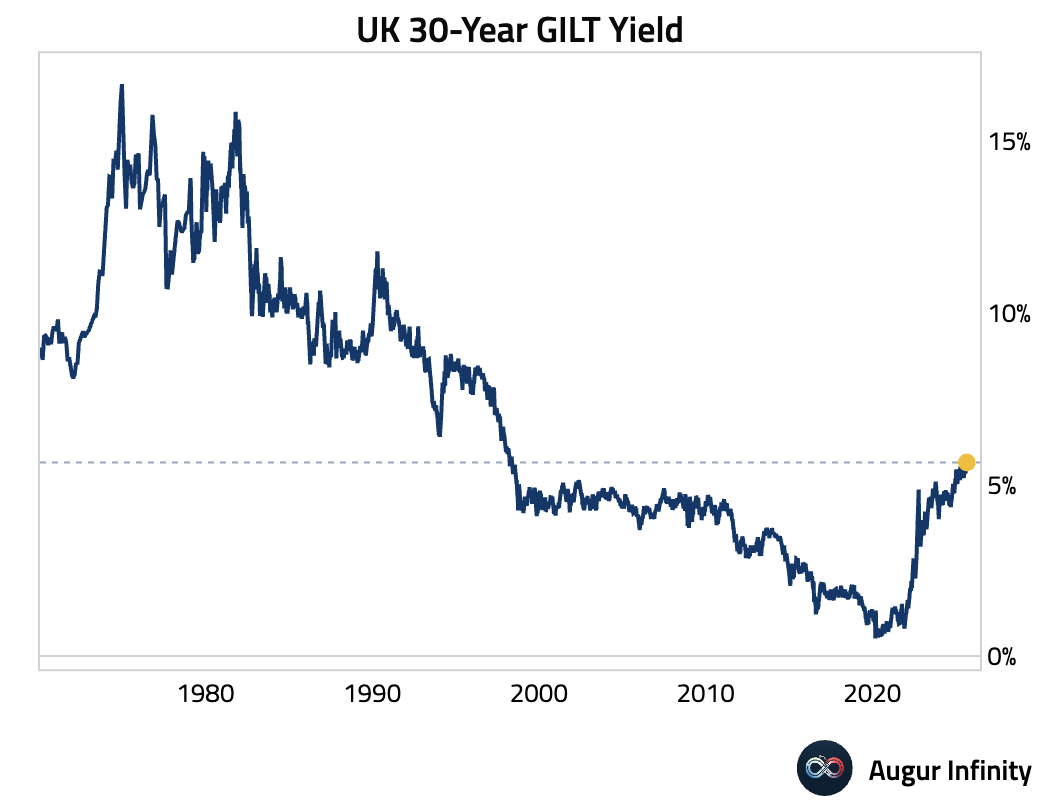
Commodities
- Gold has reached another all-time high, while silver is trading at the highest level since 2011.
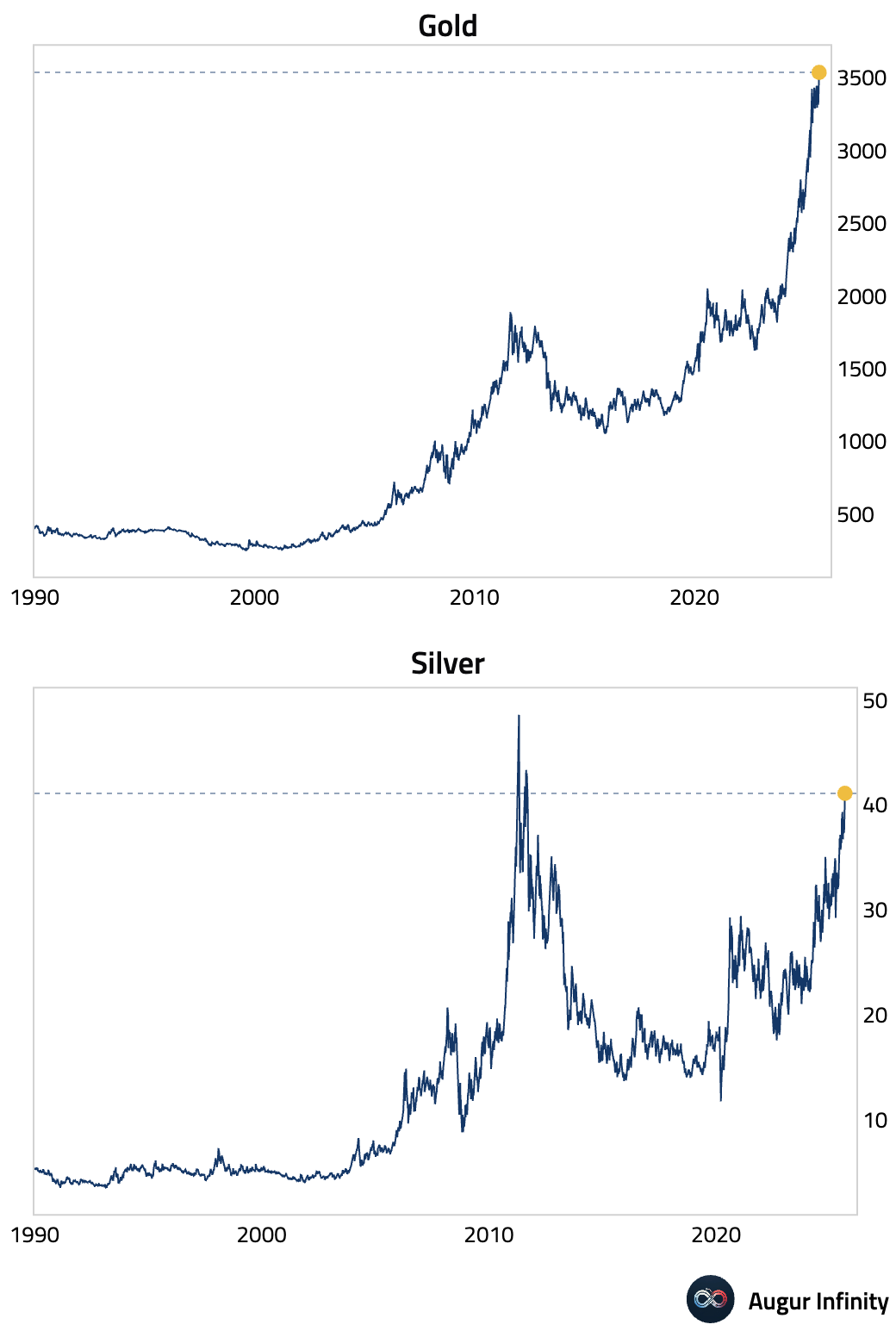
FX
- The US dollar strengthened against nearly all its G10 peers amid rising Treasury yields and broader risk-off sentiment. The British pound (−1.1%) and Japanese yen (−1.0%) were the primary underperformers. The Norwegian krone was the sole outperformer, gaining 0.1% for its third consecutive daily advance.
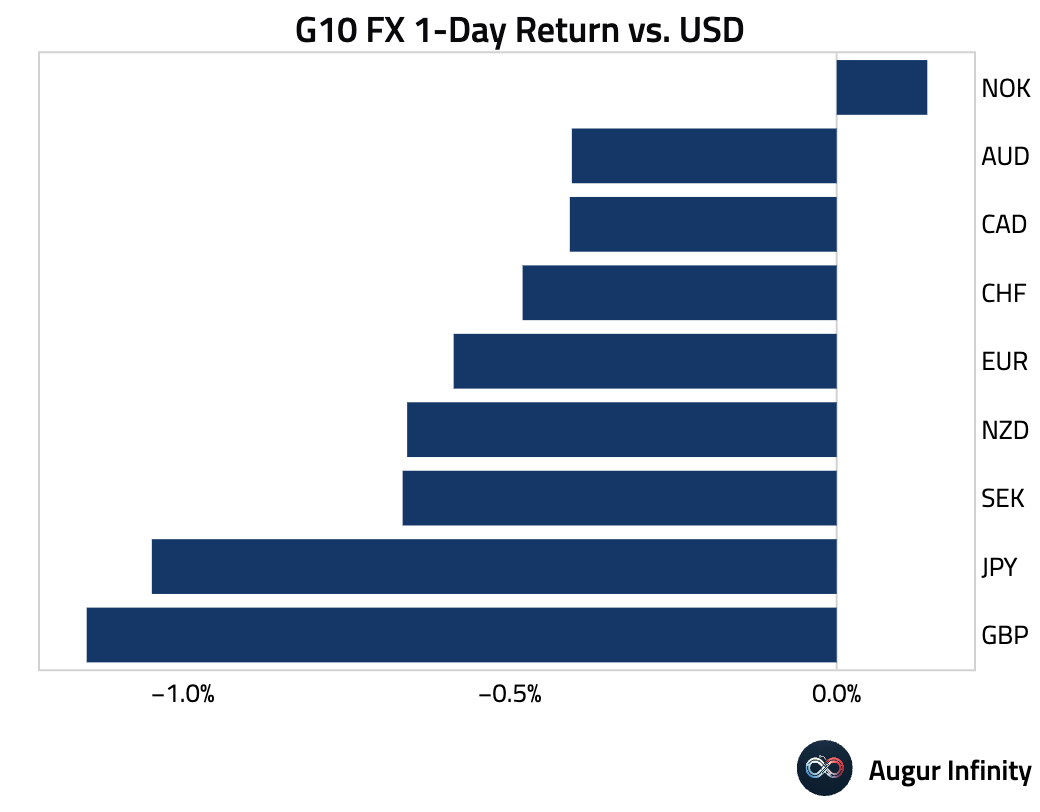
Disclaimer
Augur Digest is an automatically generated newsletter edited by humans. It may contain inaccuracies and is not investment advice. Augur Labs LLC will not accept liability for any loss or damage as a result of your reliance on the information contained in the newsletter.
Reply